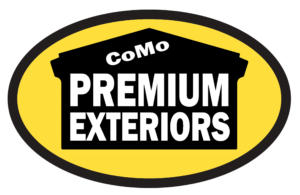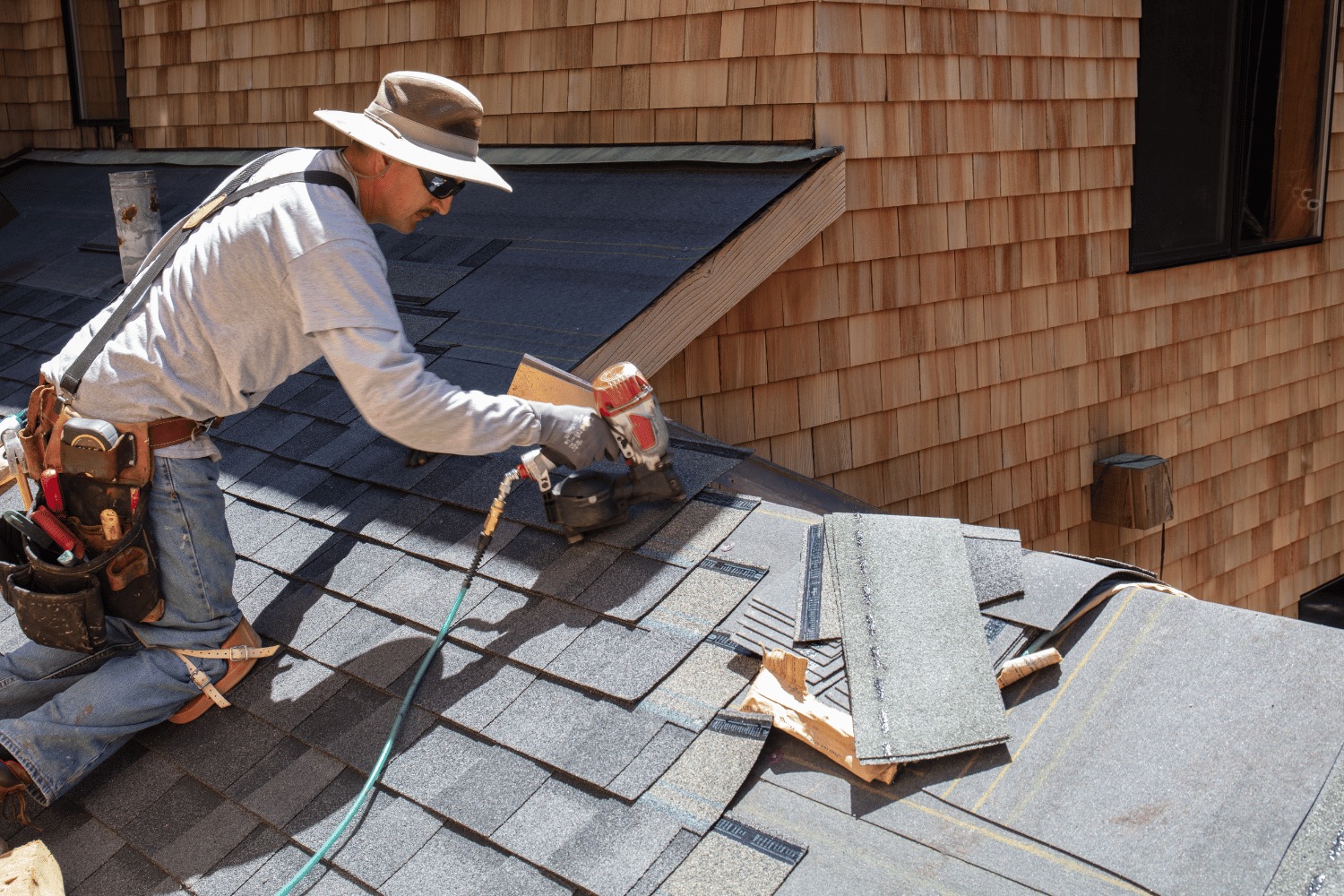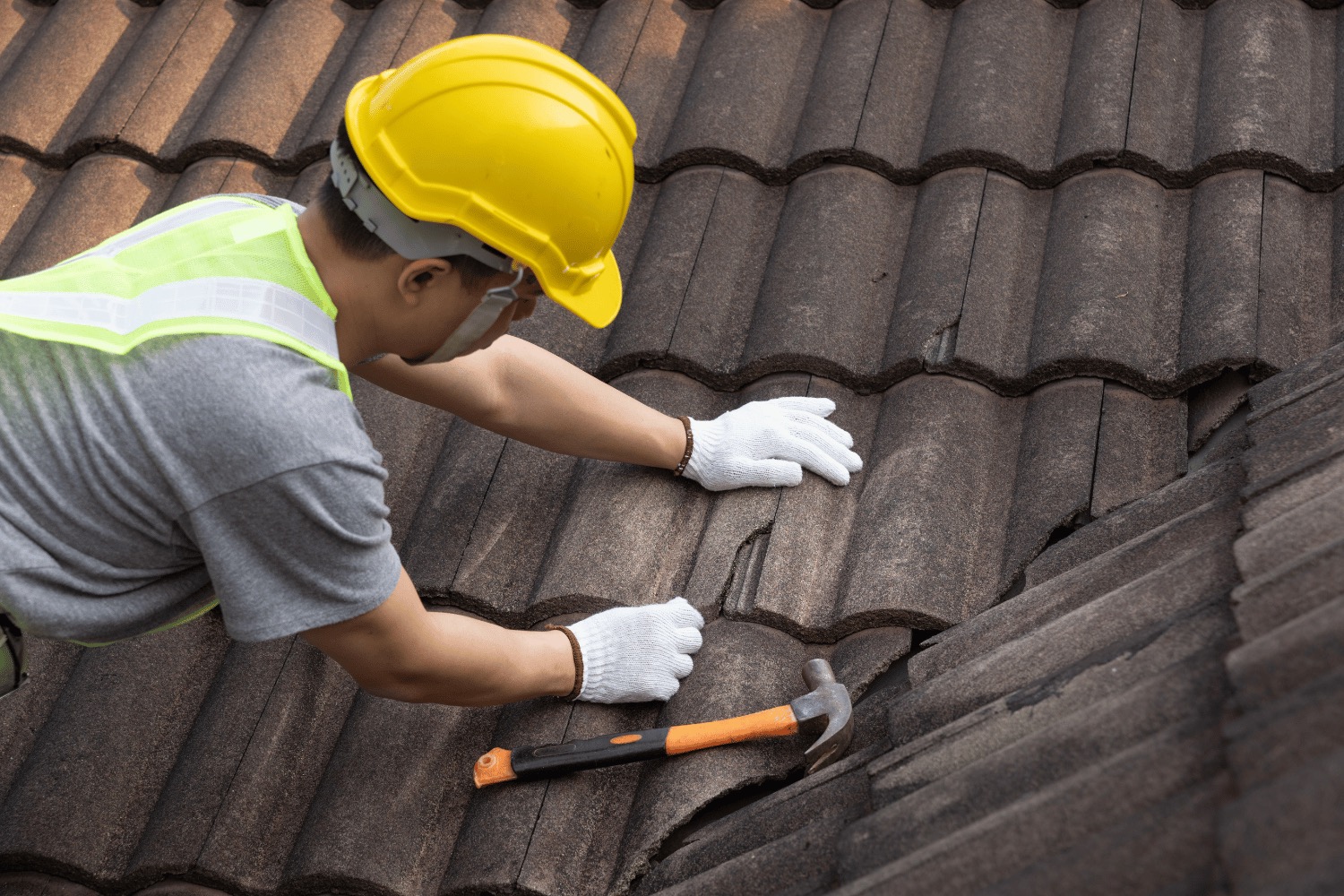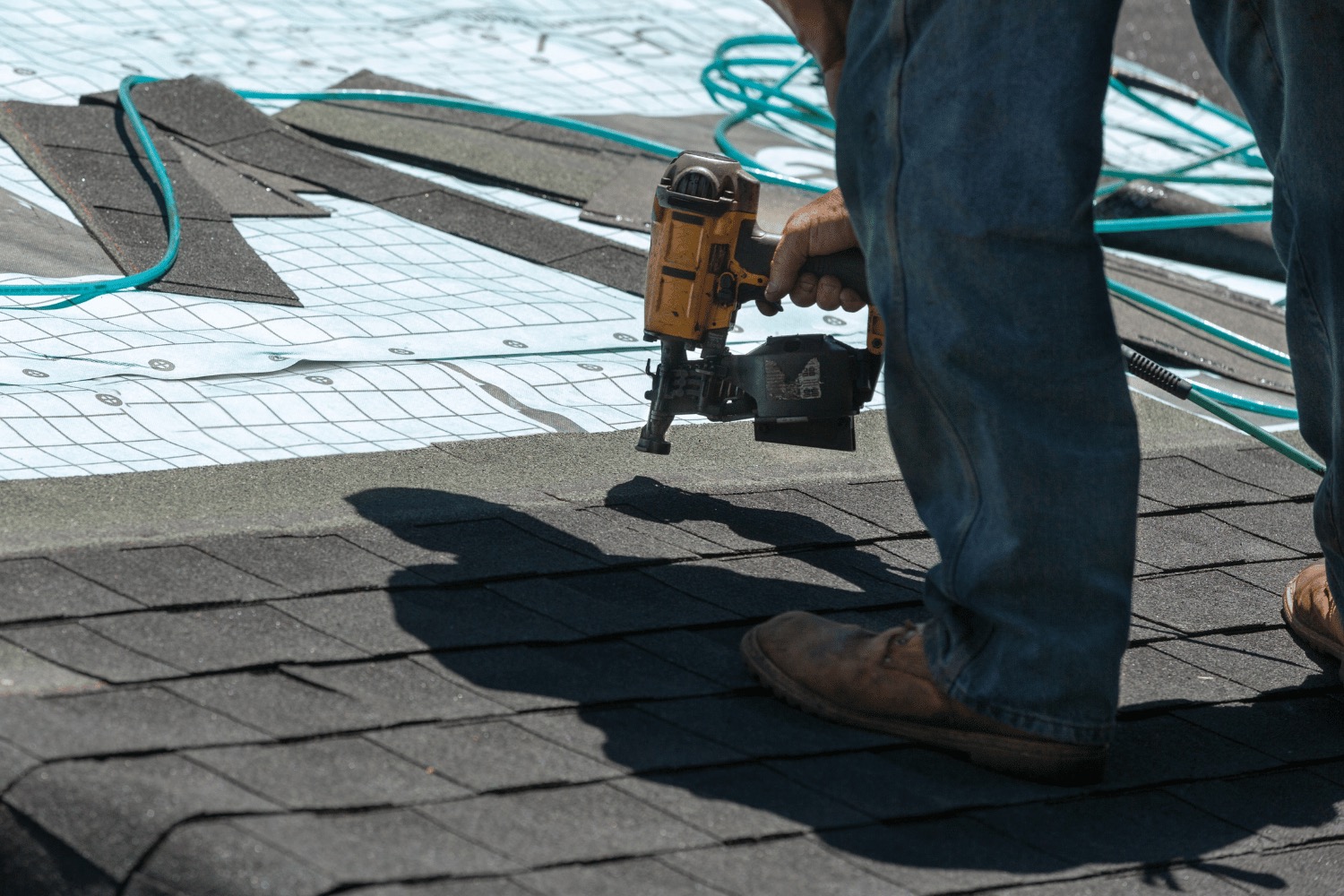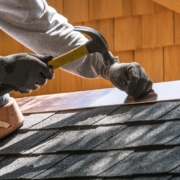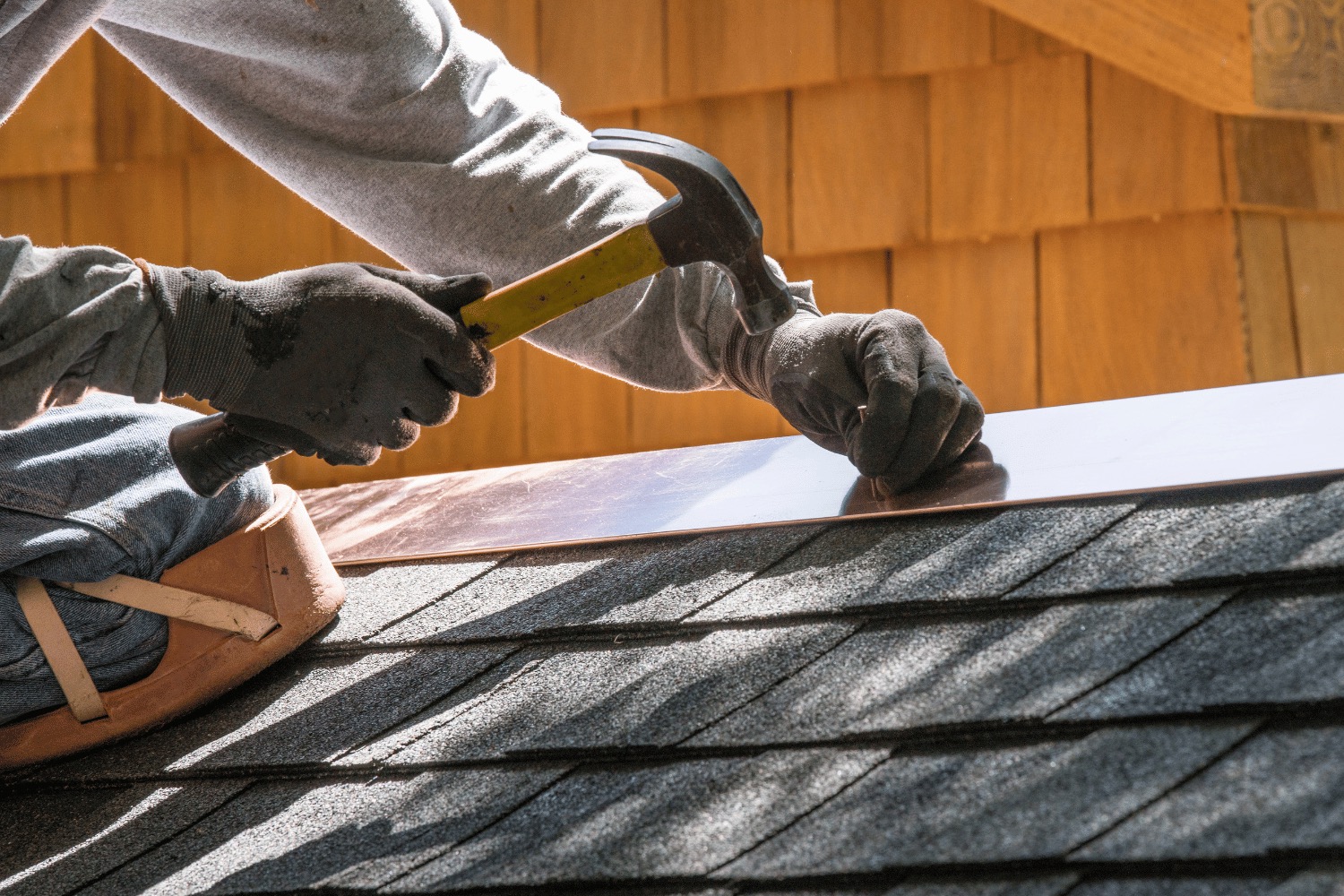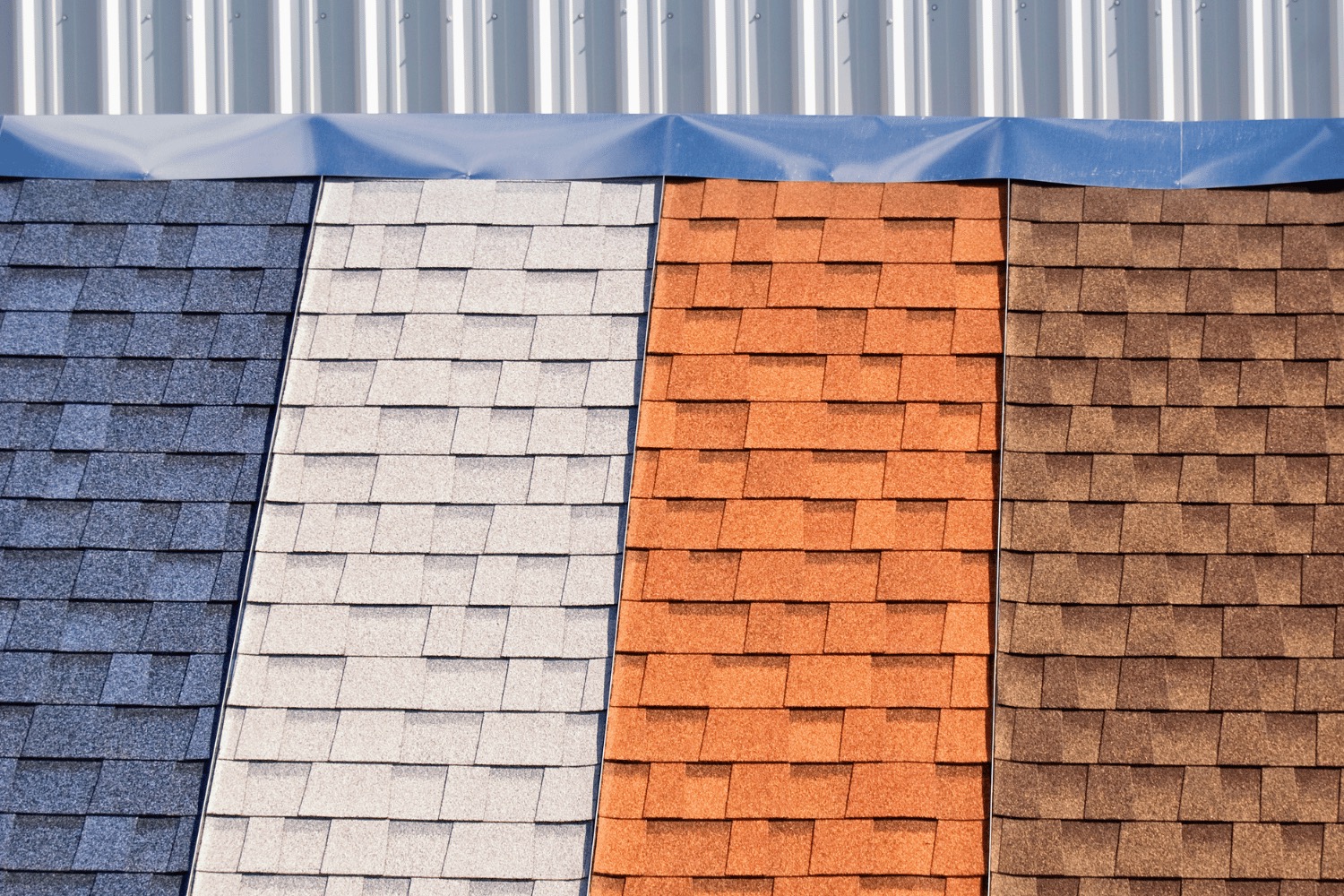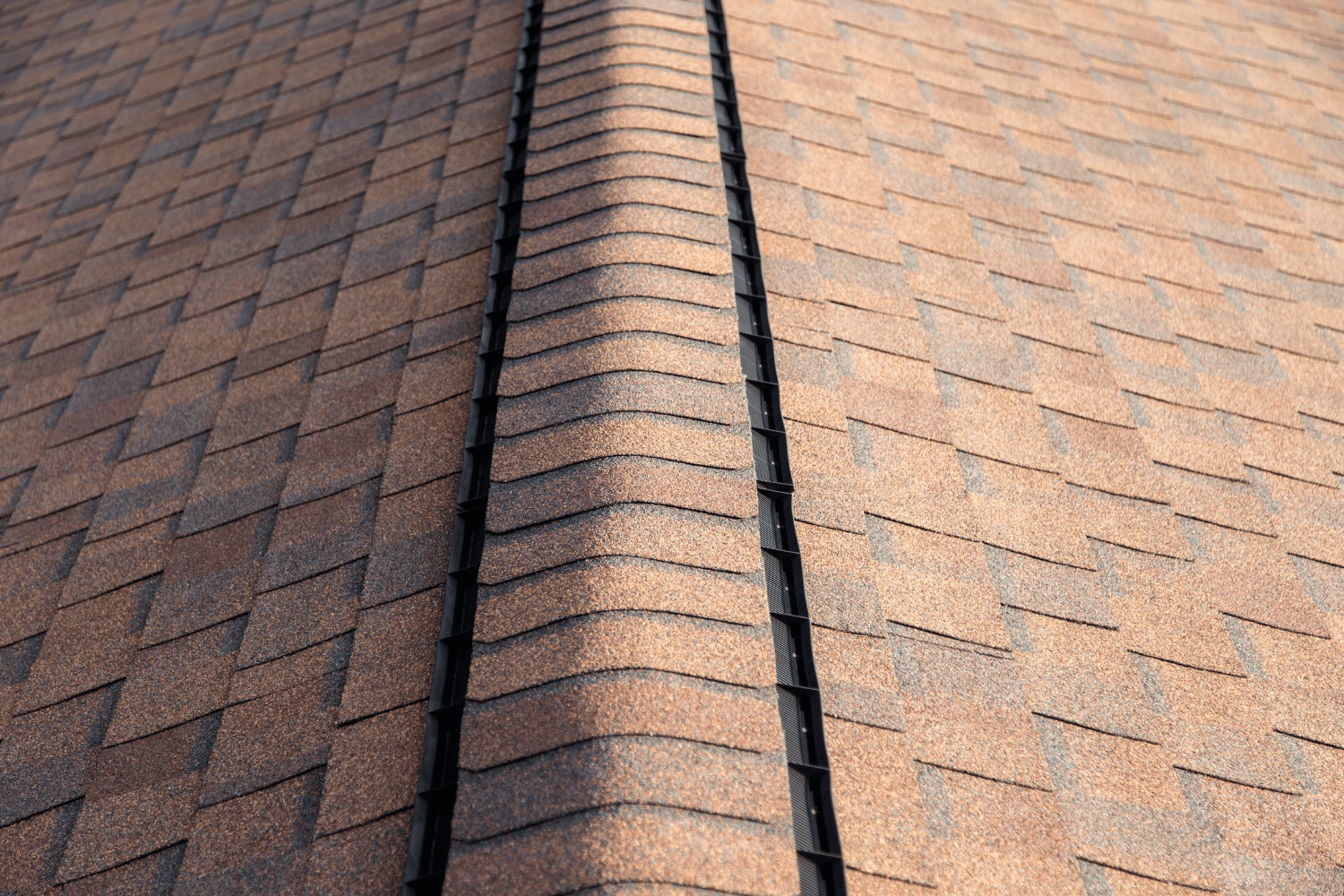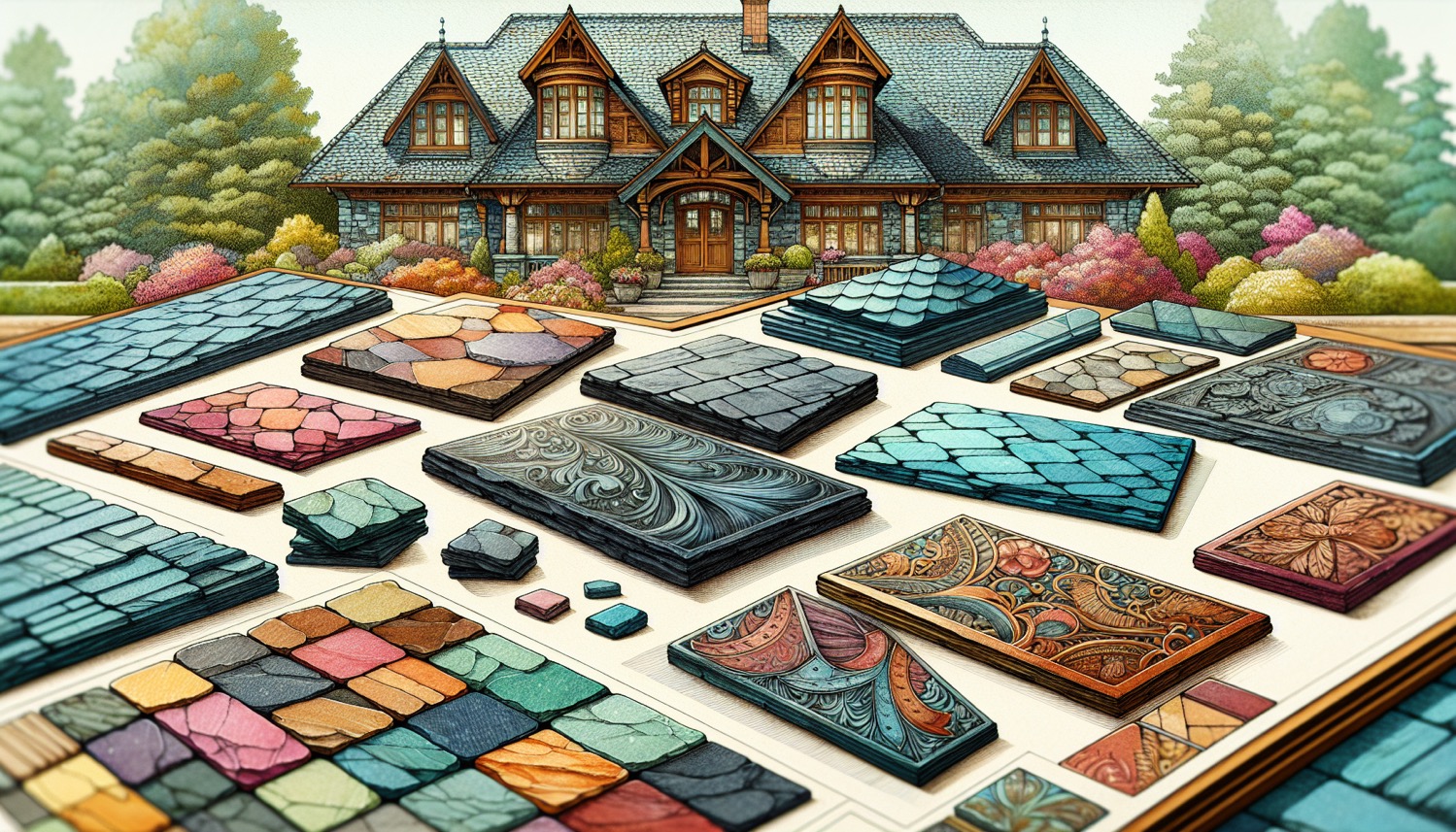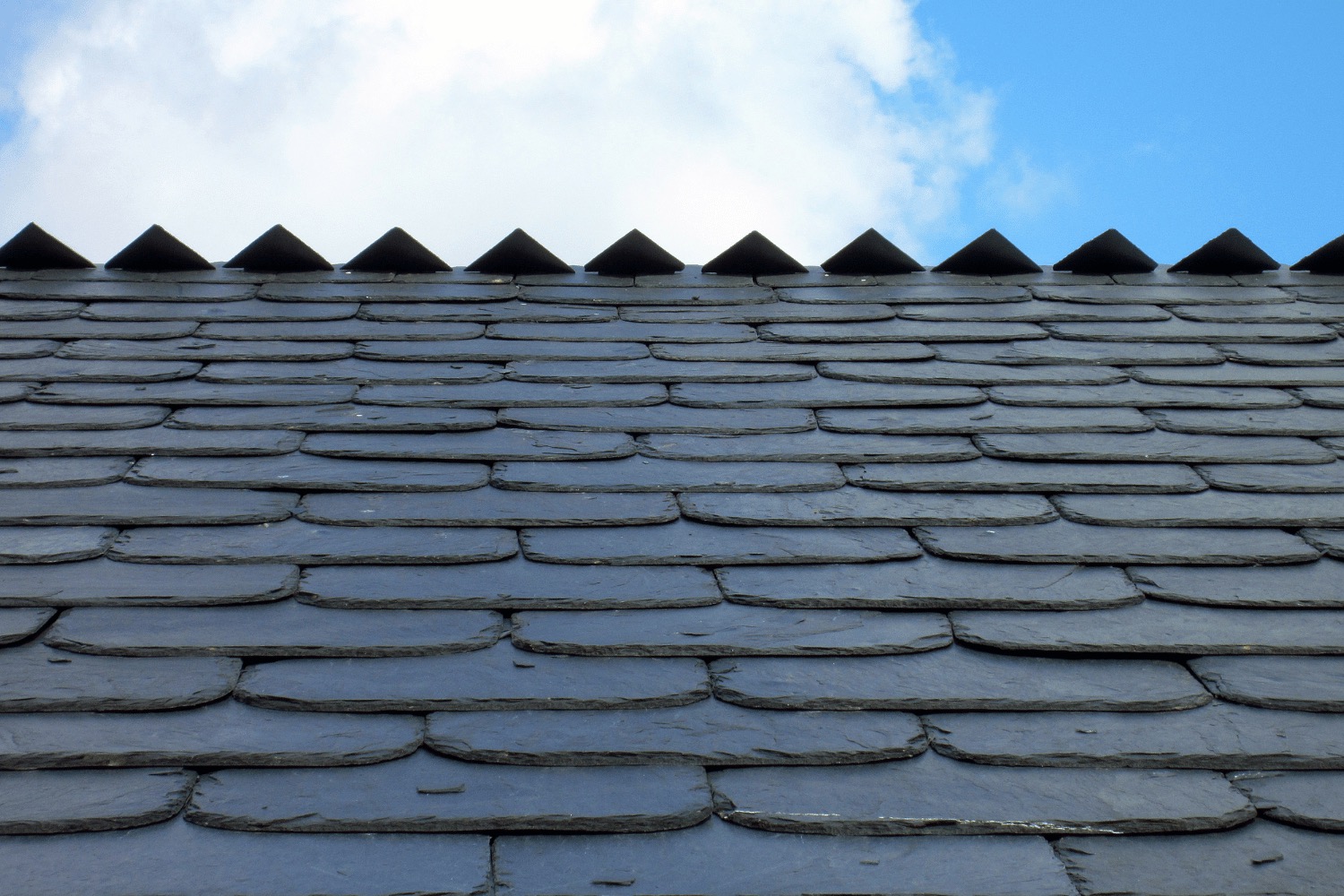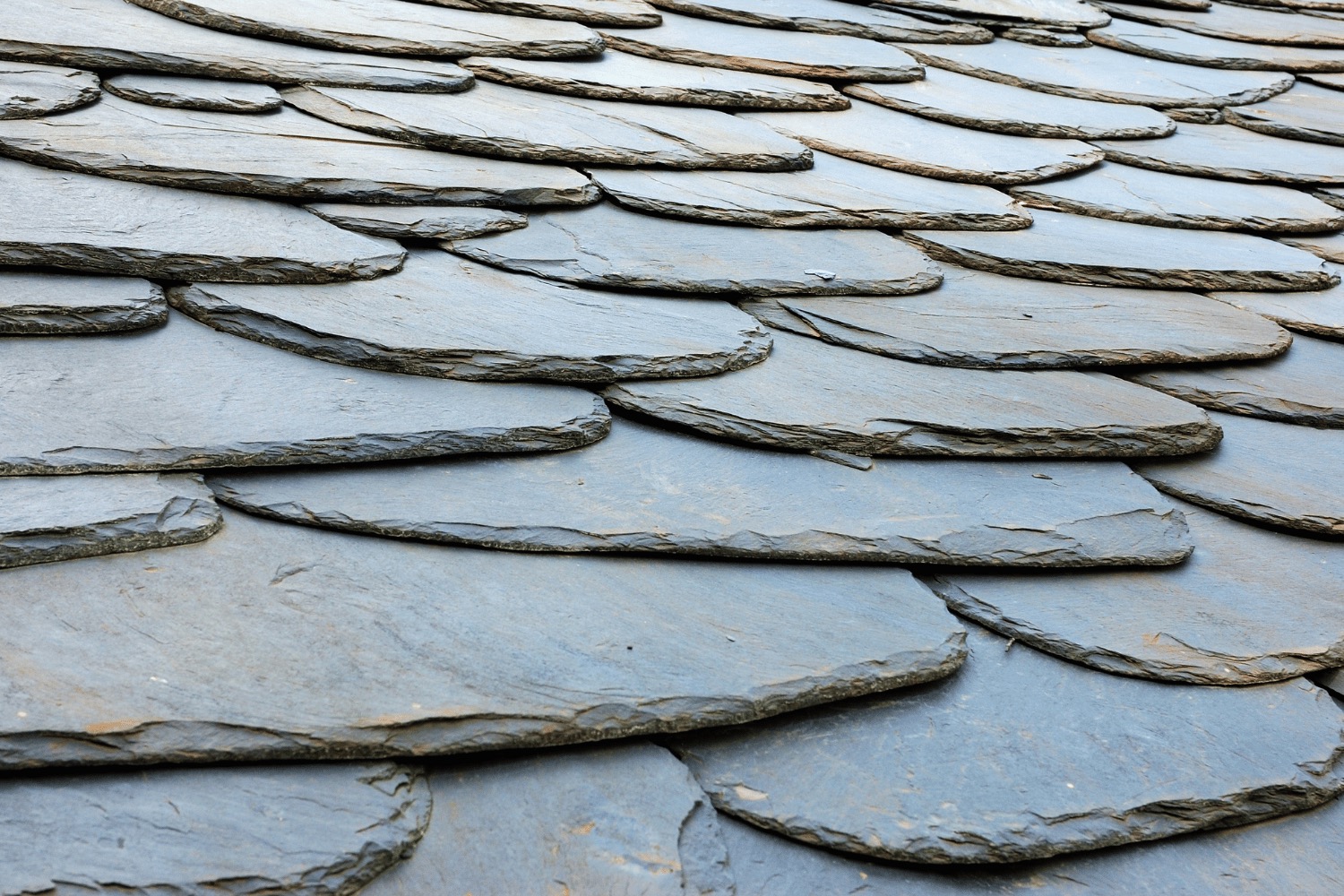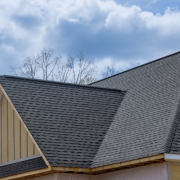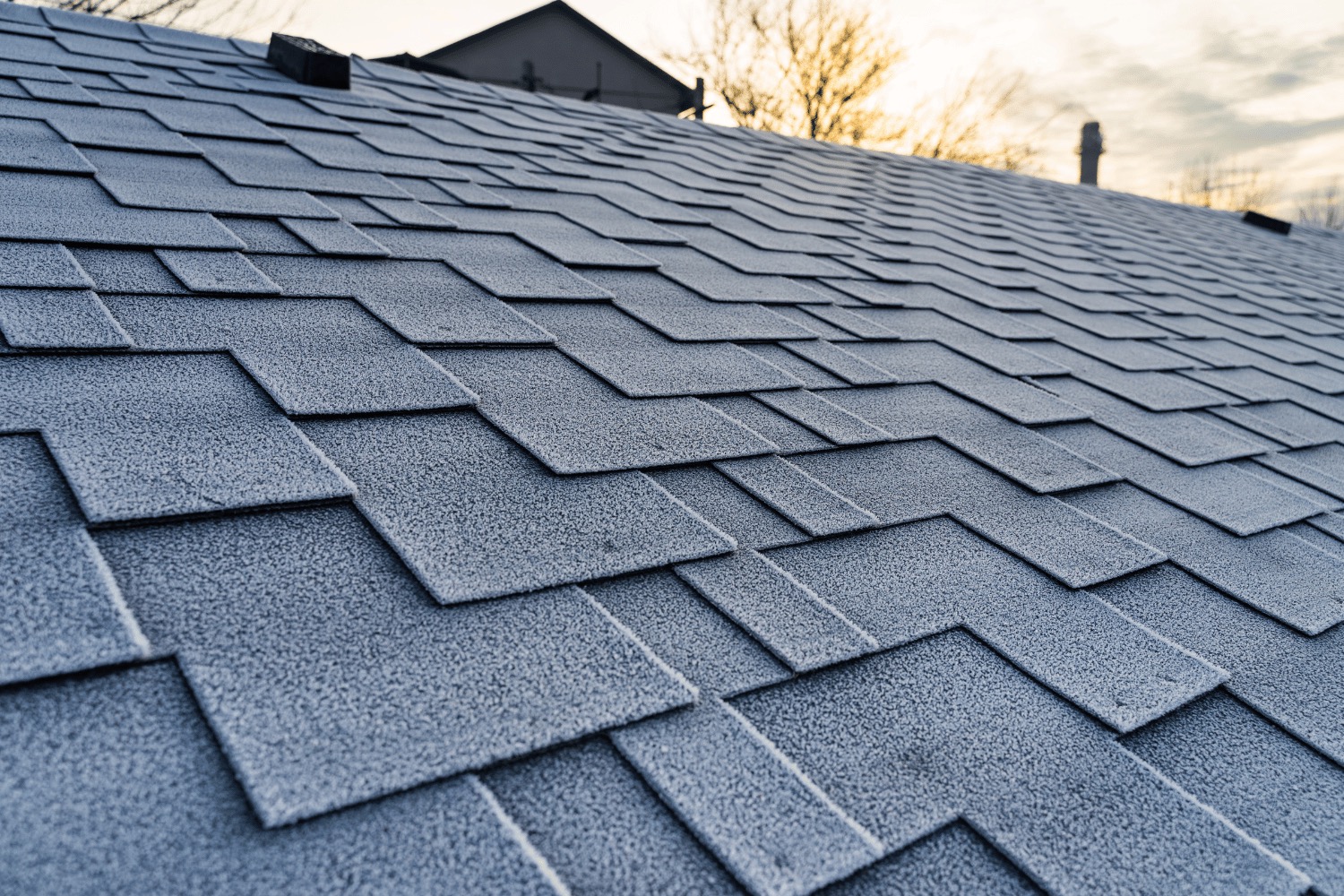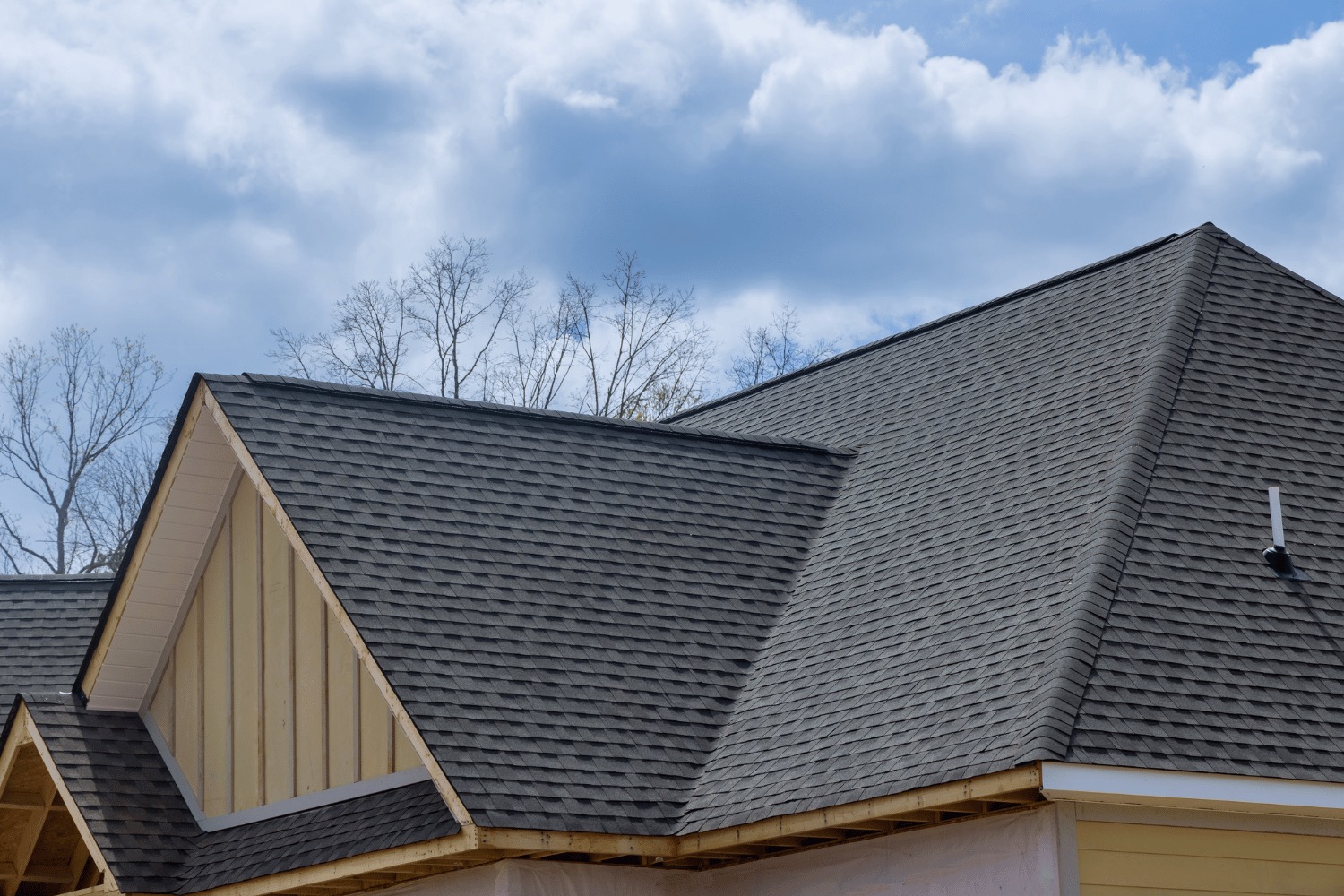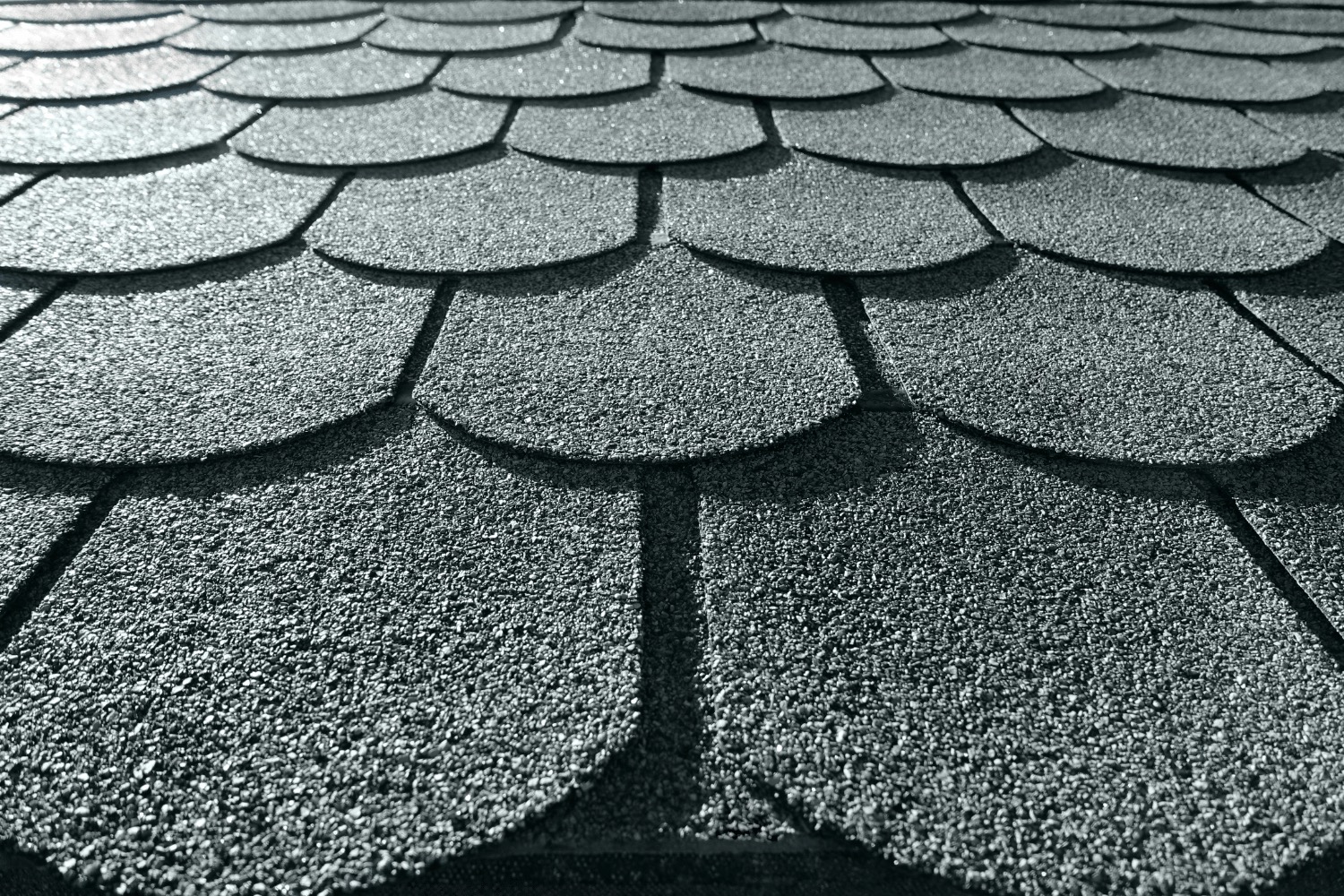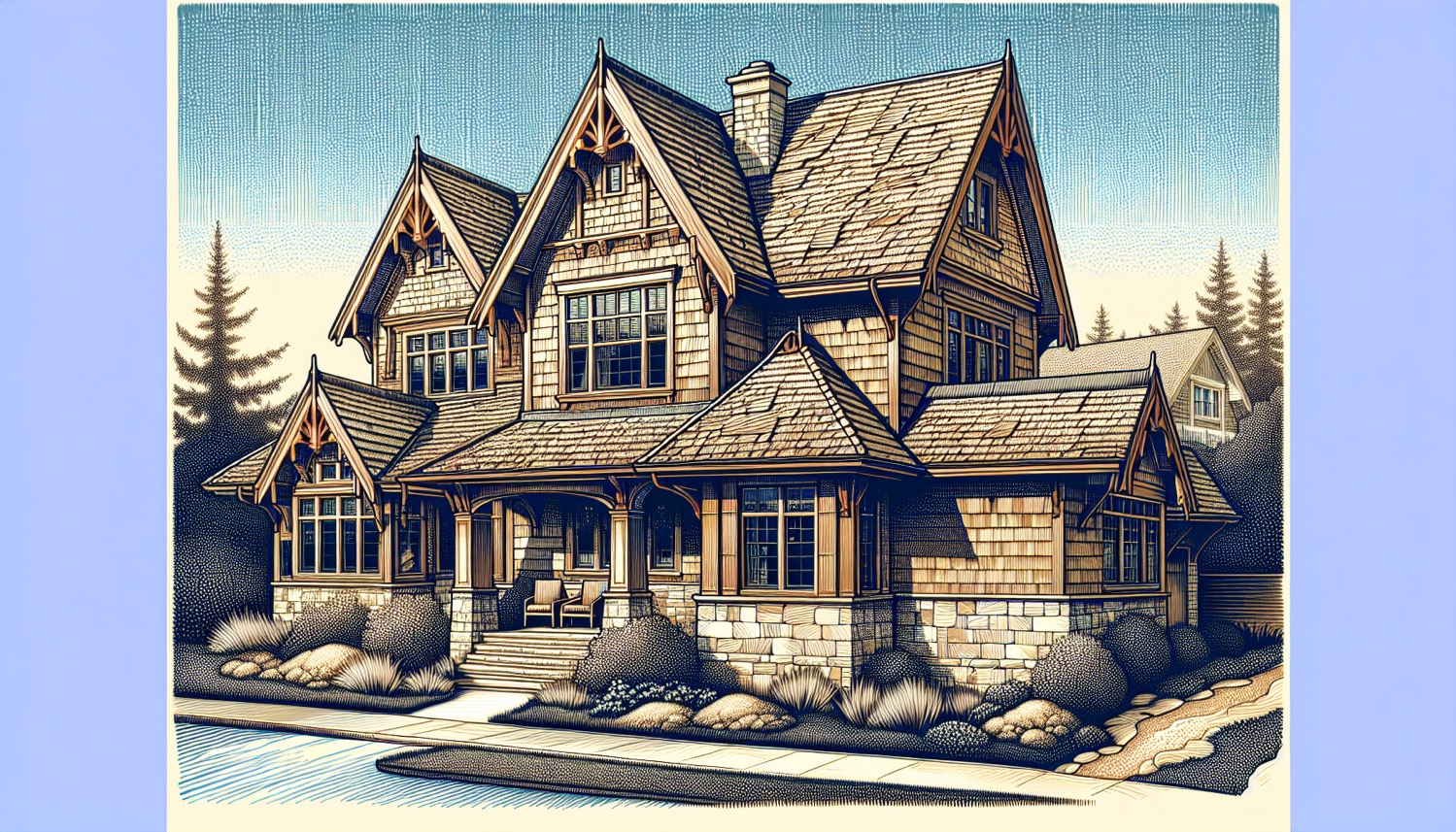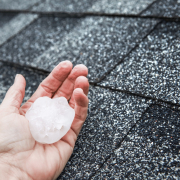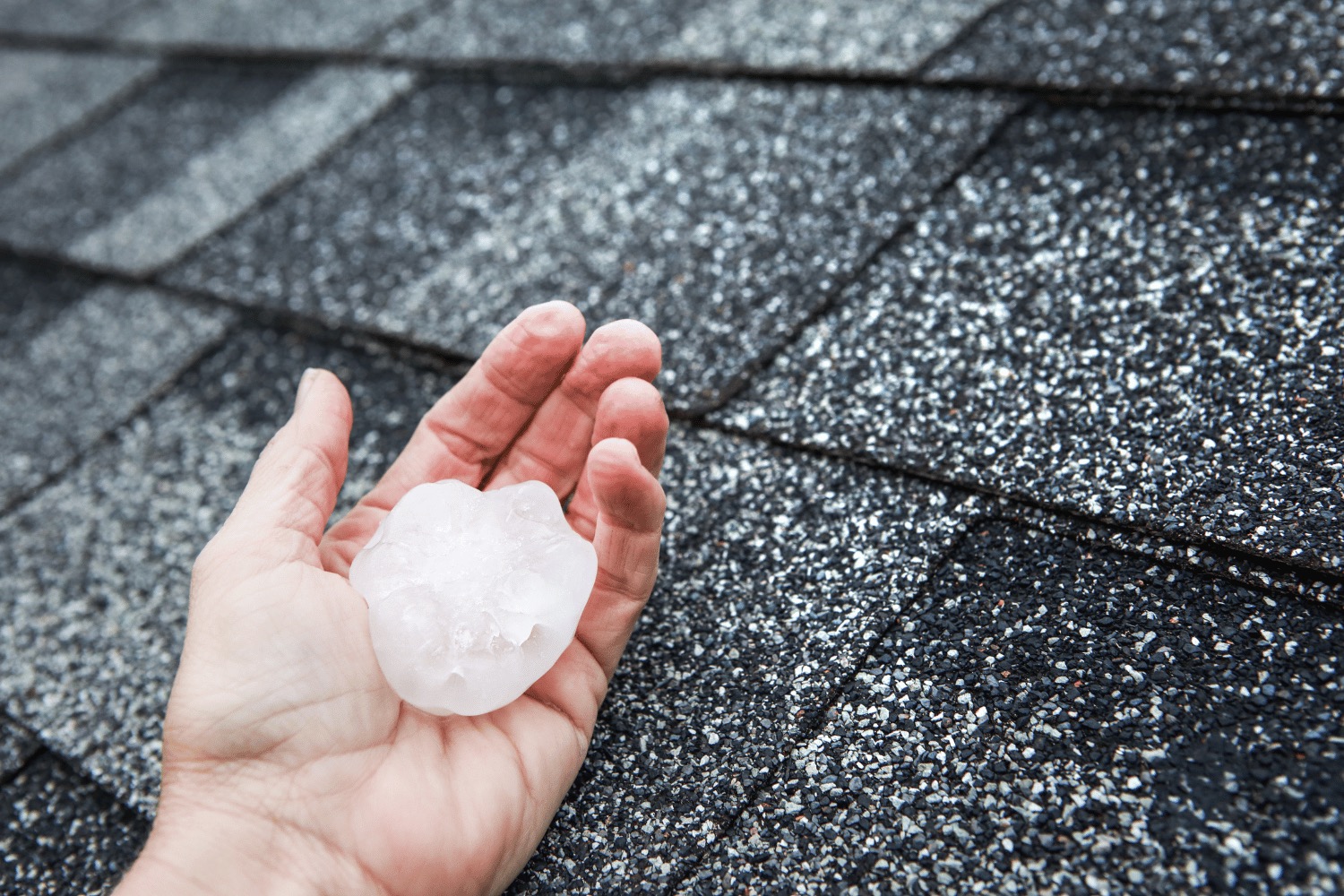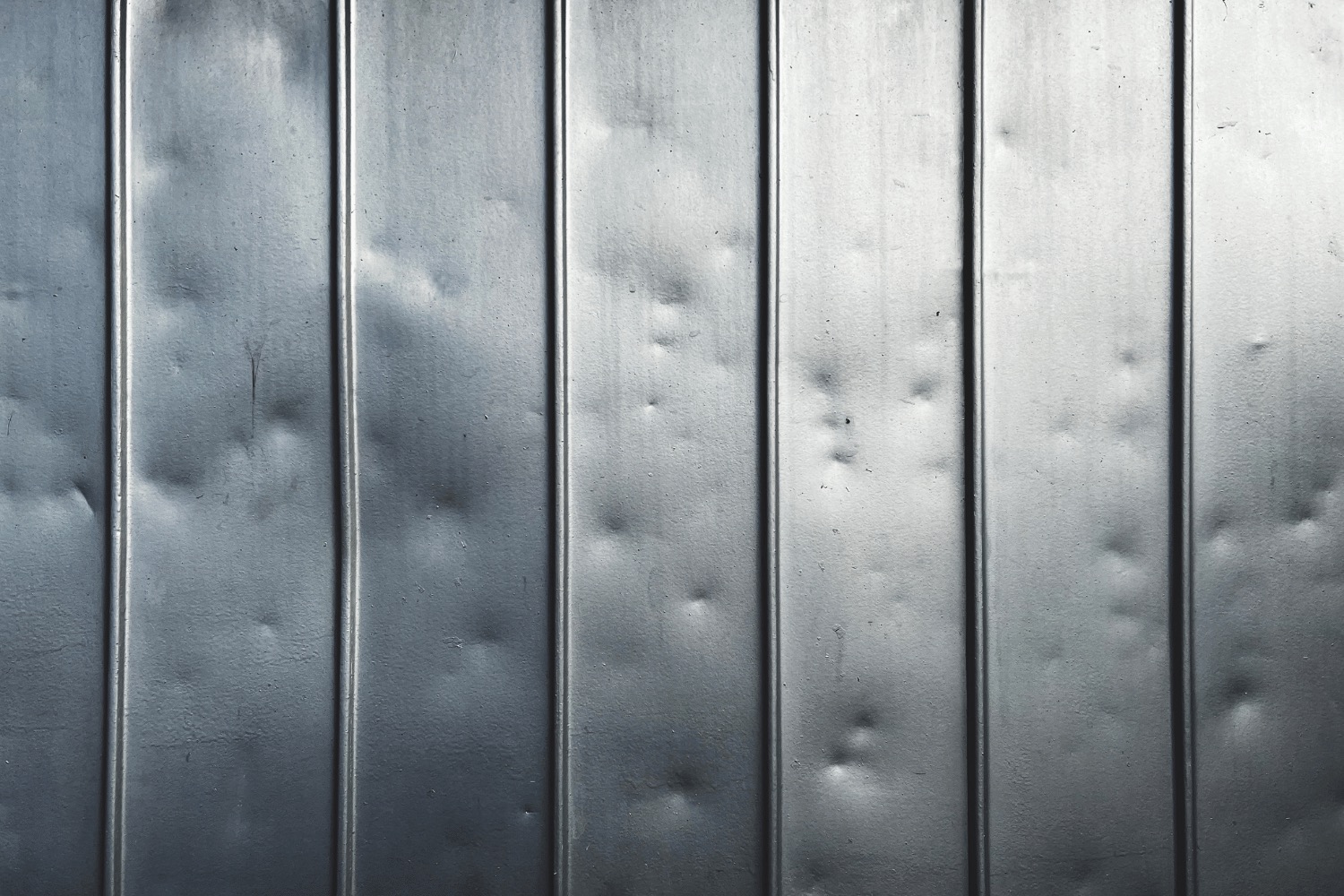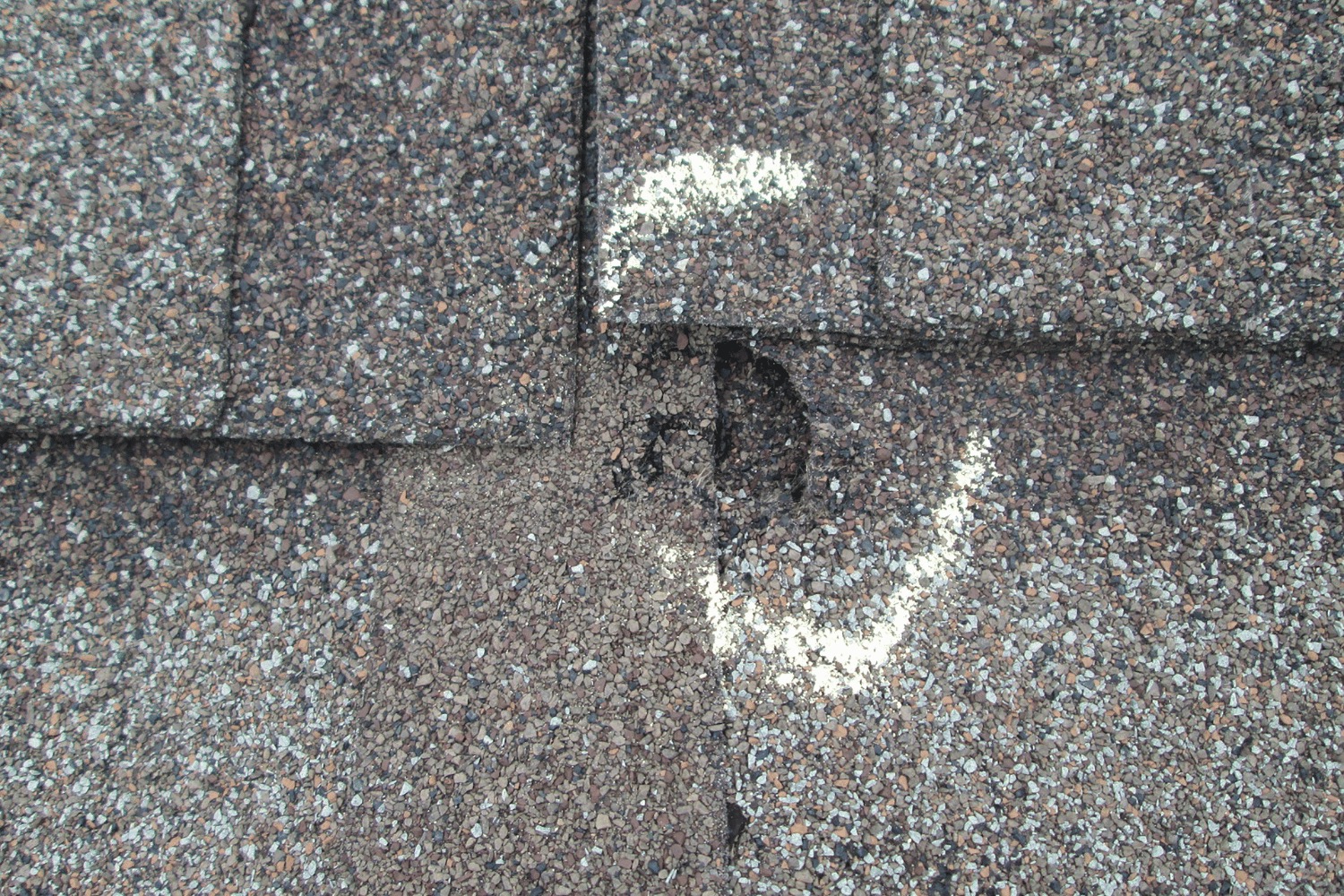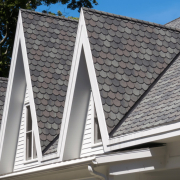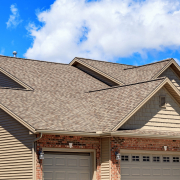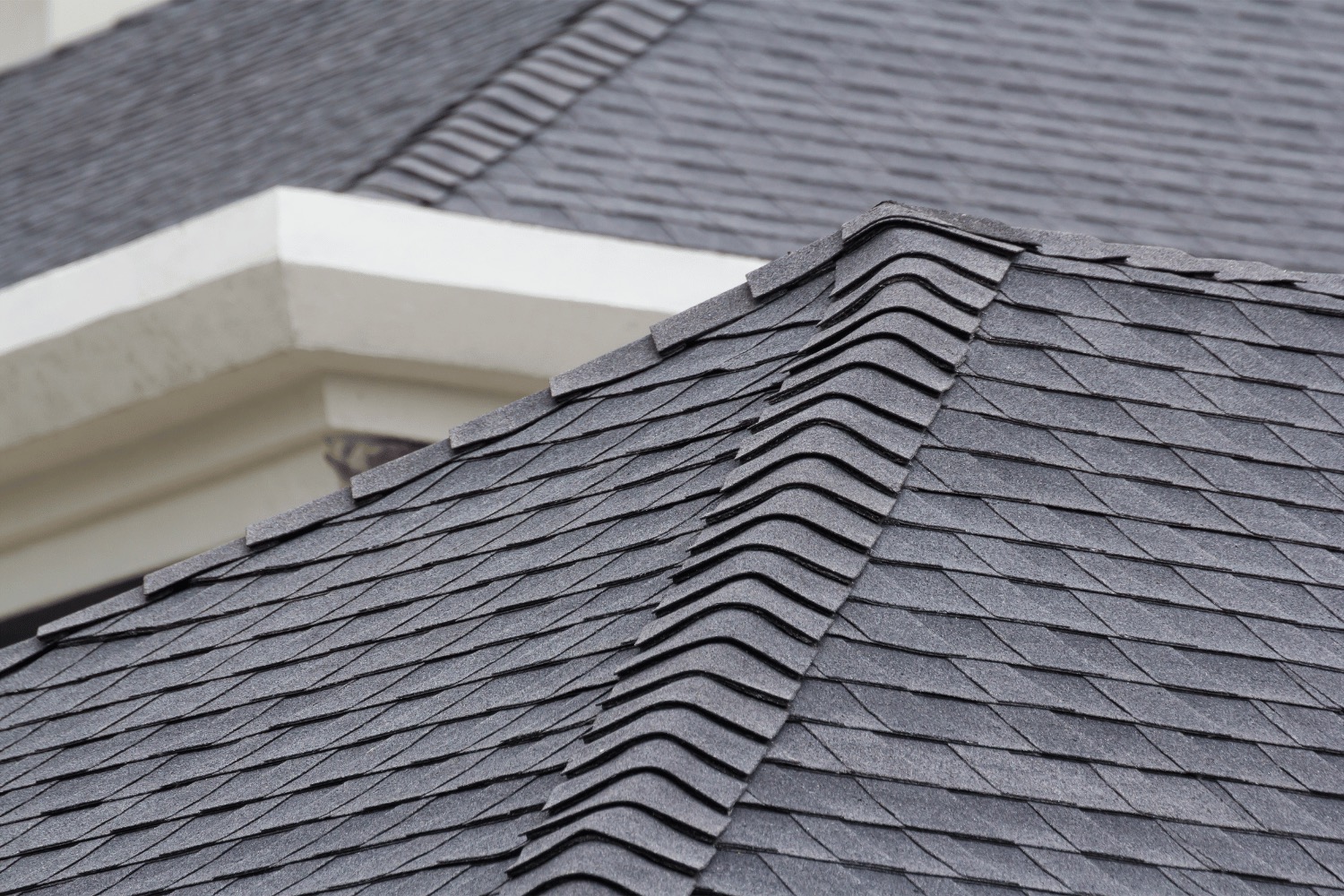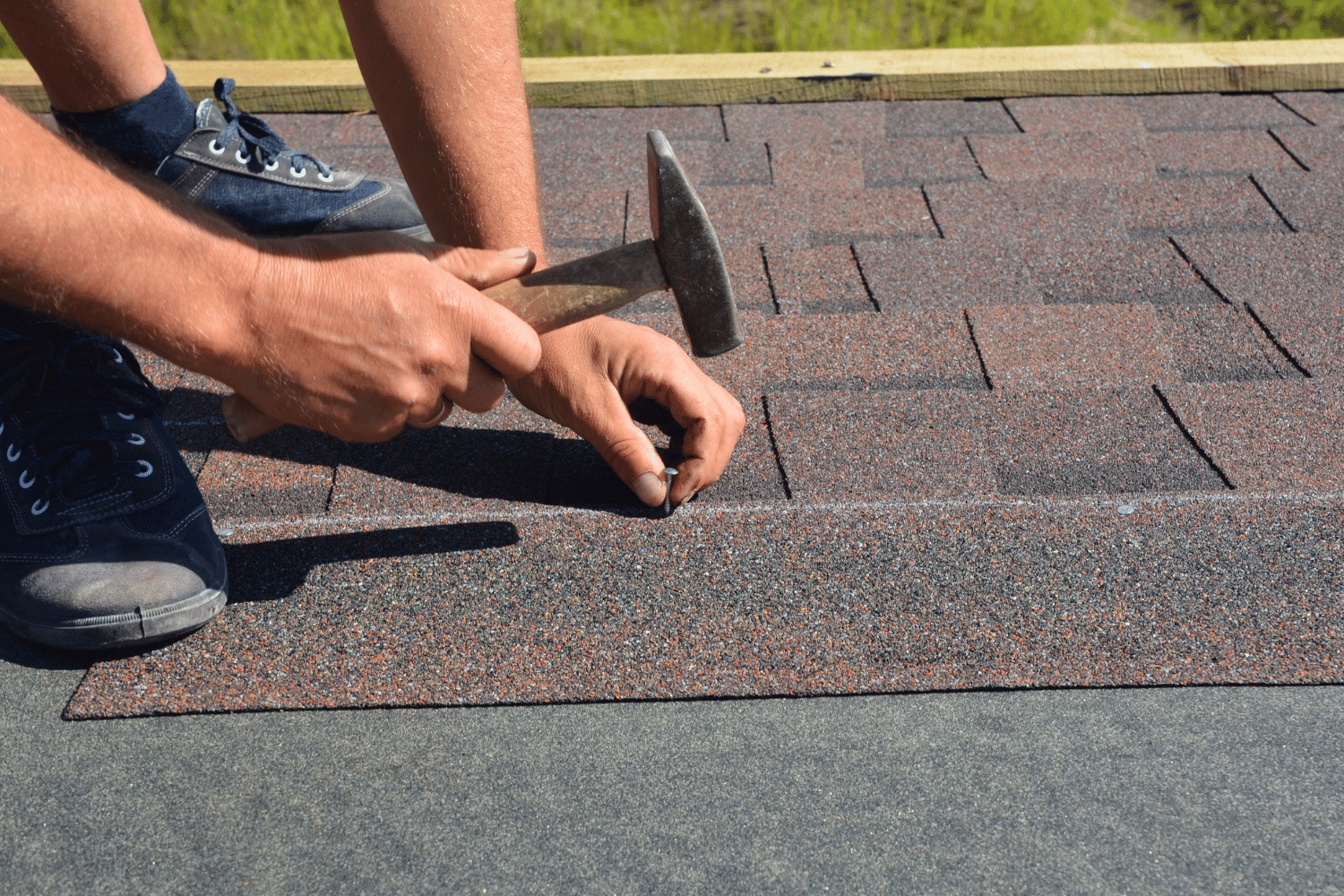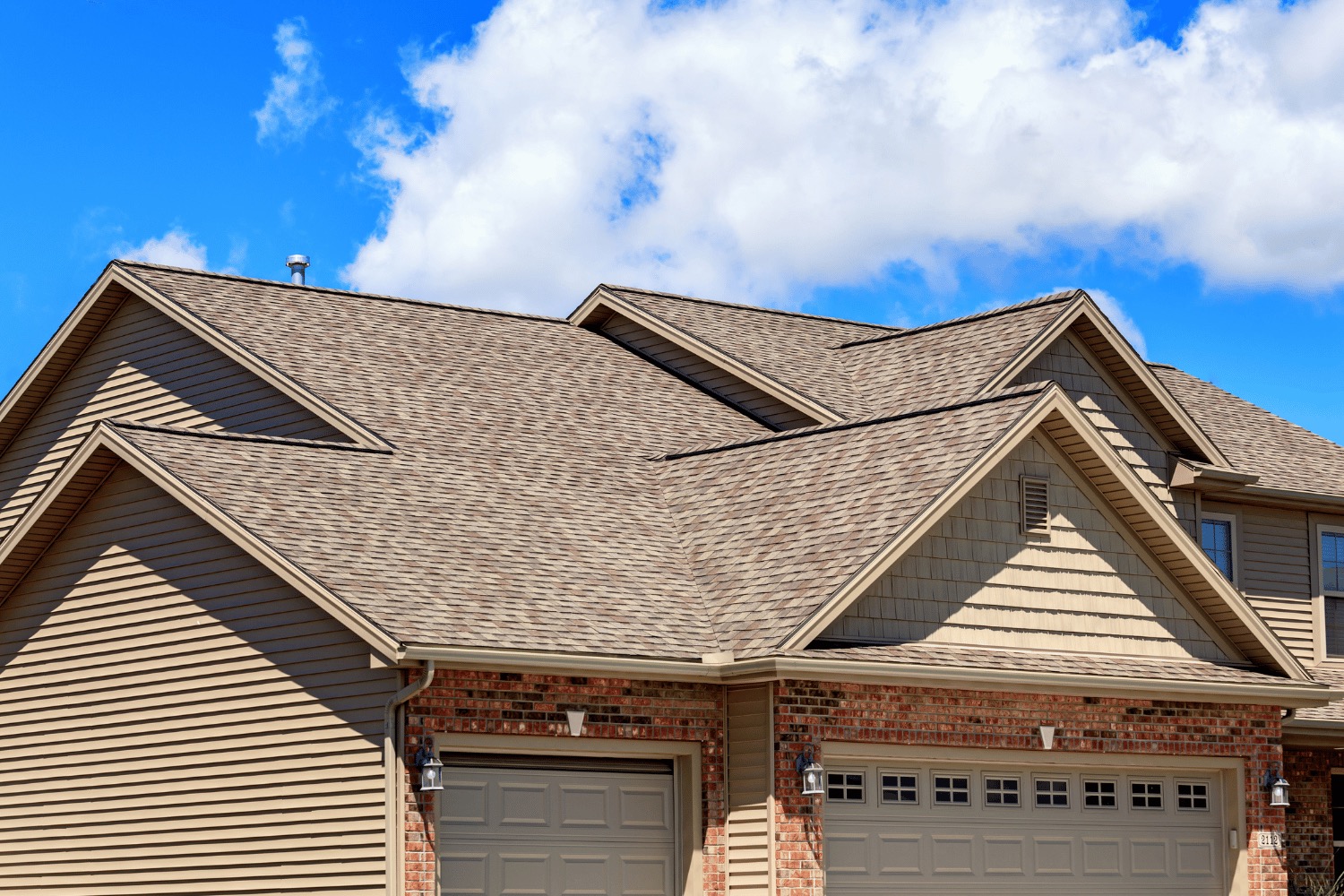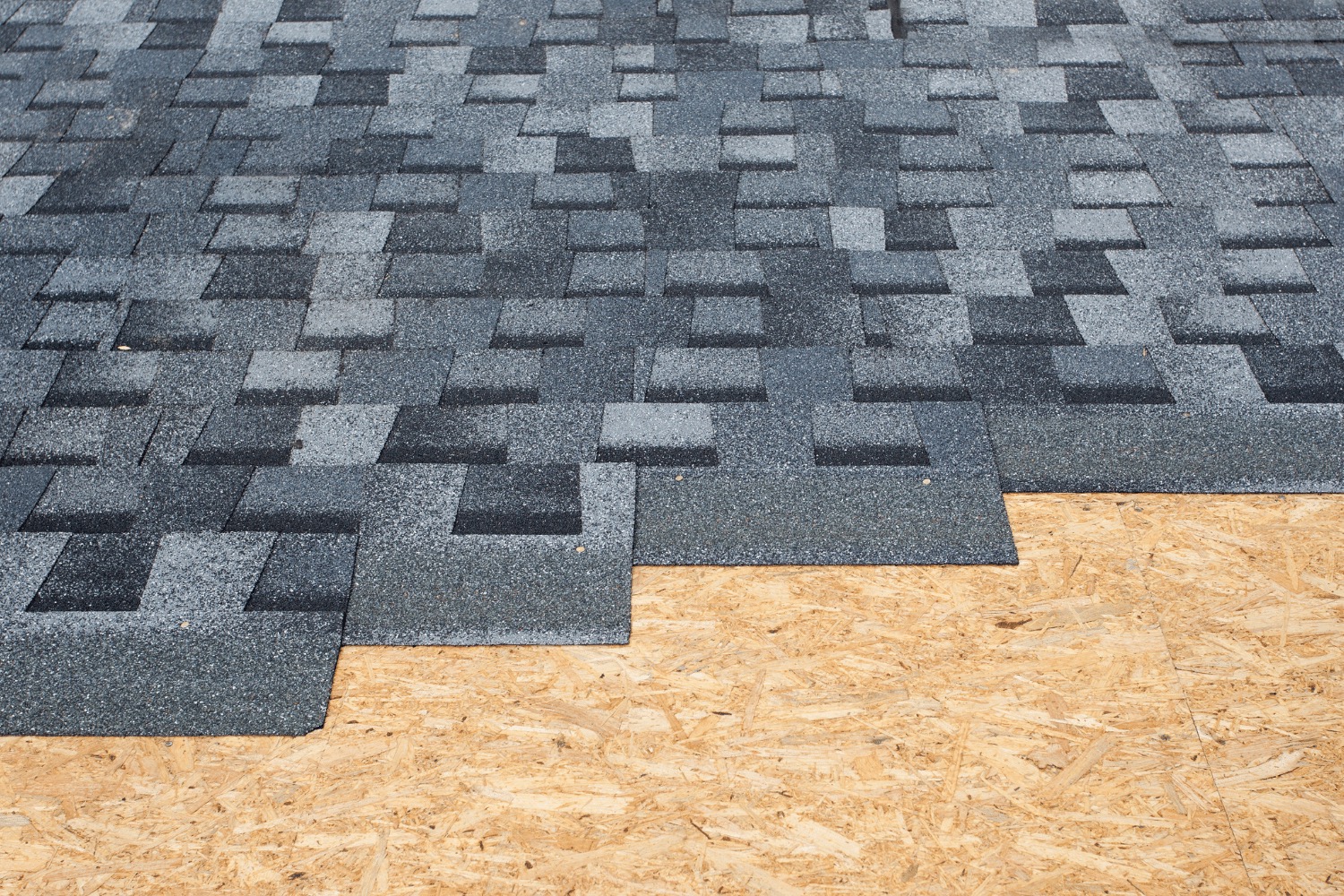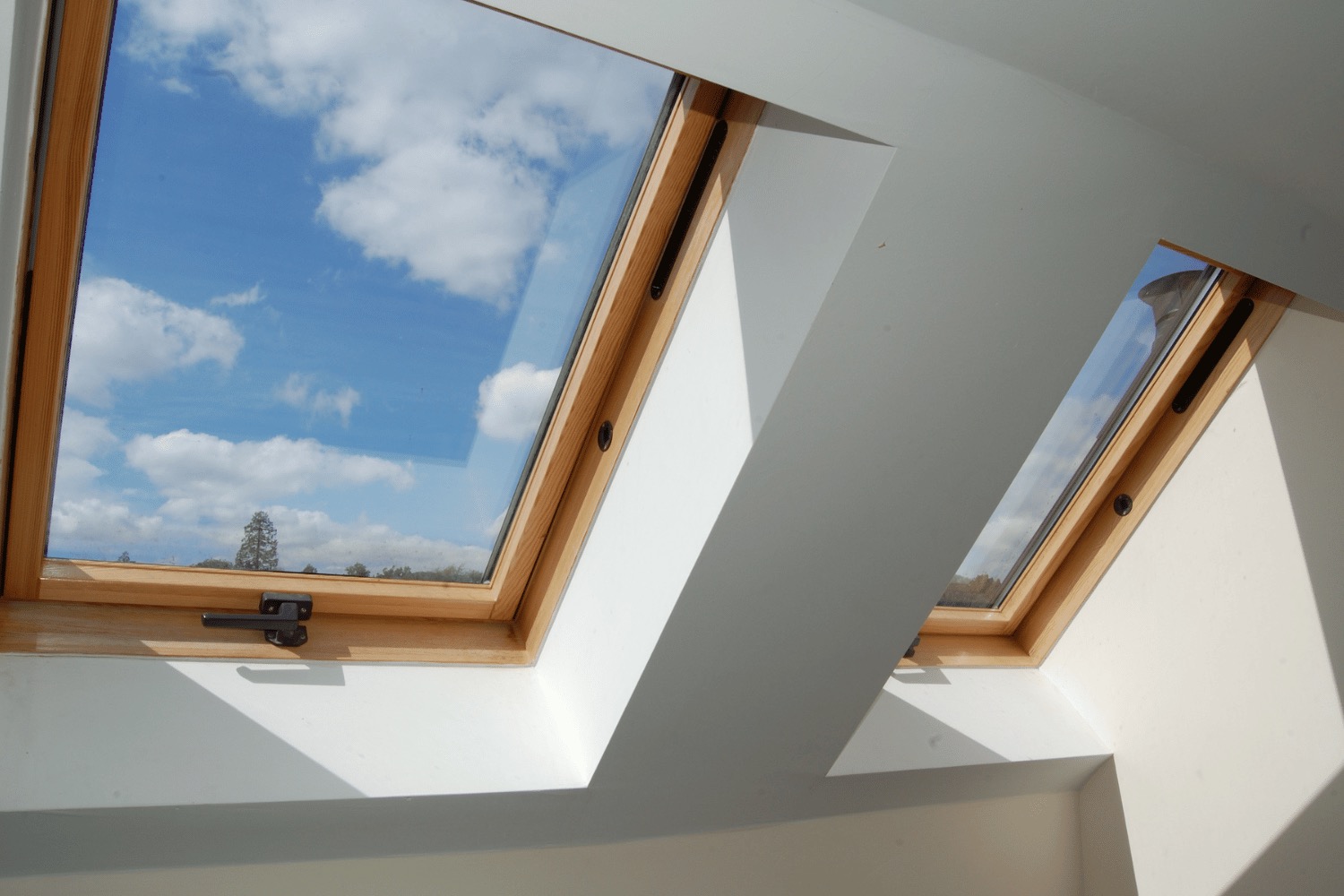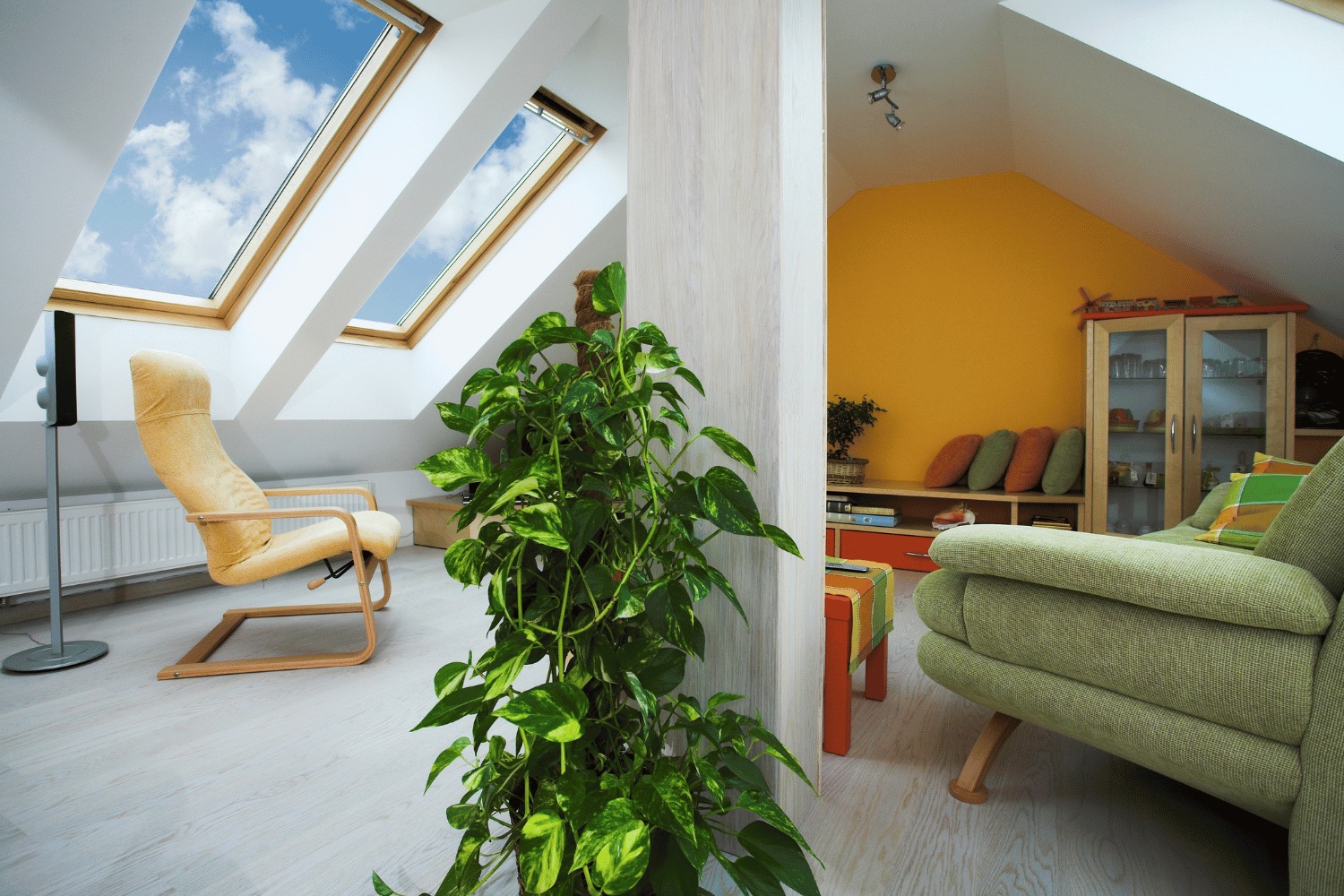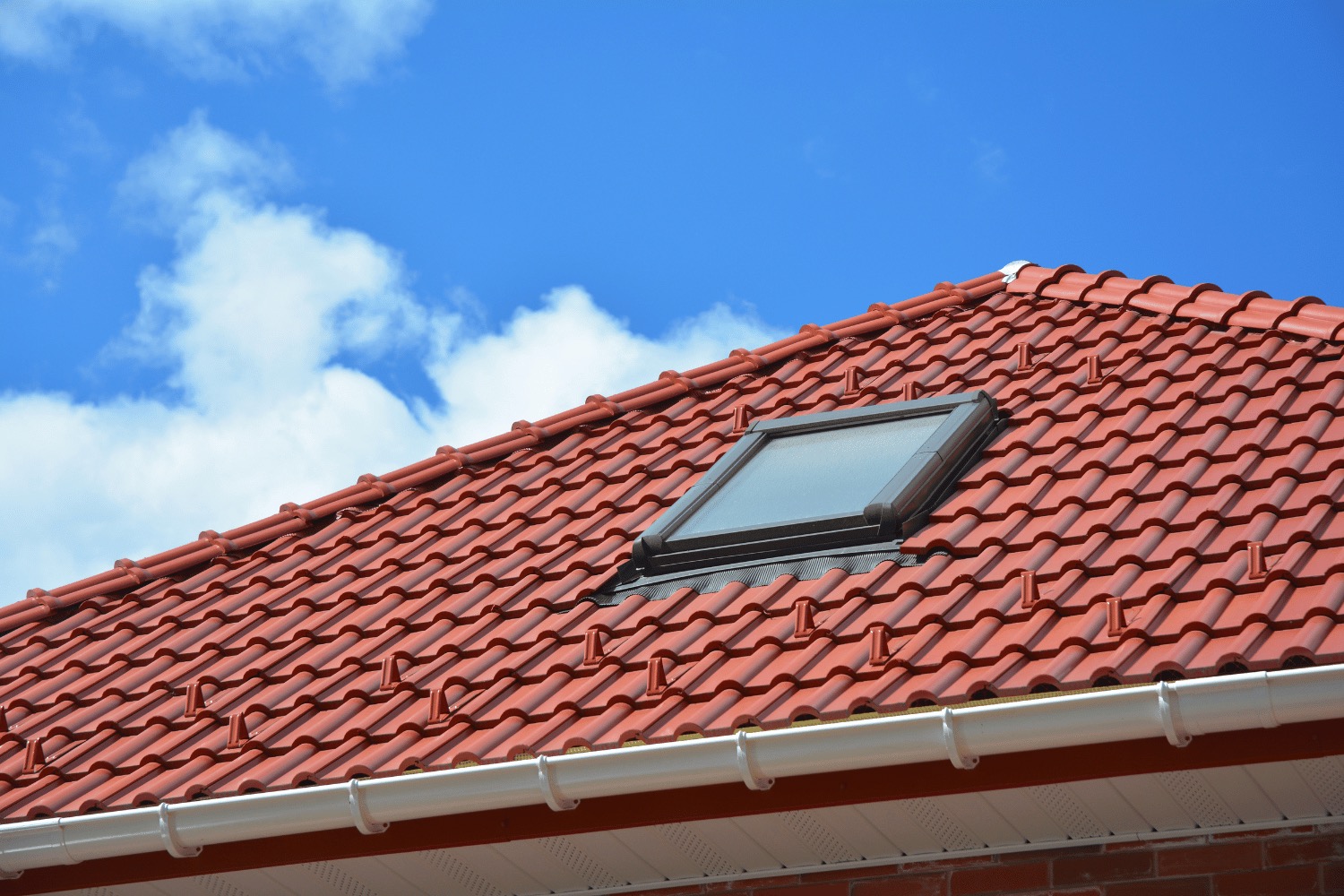Top 10 Items on Your Roofing List of Materials
Top 10 Items on Your Roofing List of Materials
Wondering what materials you need for a roofing project? This roofing list of materials covers everything from roof decking to underlayment. Find out what you need to ensure a strong, durable roof. Additionally, consider a green roof as an innovative option that contributes to environmental management and aesthetics.
Key Takeaways
-
Roof decking provides the essential structural support and stability for roofing systems, with options like plywood, OSB, and concrete sheathing tailored for specific needs.
-
Underlayment acts as a vital moisture barrier, with felt and synthetic options offering different levels of protection; synthetic underlayment is generally more durable.
-
Proper installation of roofing components such as drip edges, ridge capping, and flashing is crucial for preventing roof leaks and ensuring the longevity of the roof.
Roof Decking
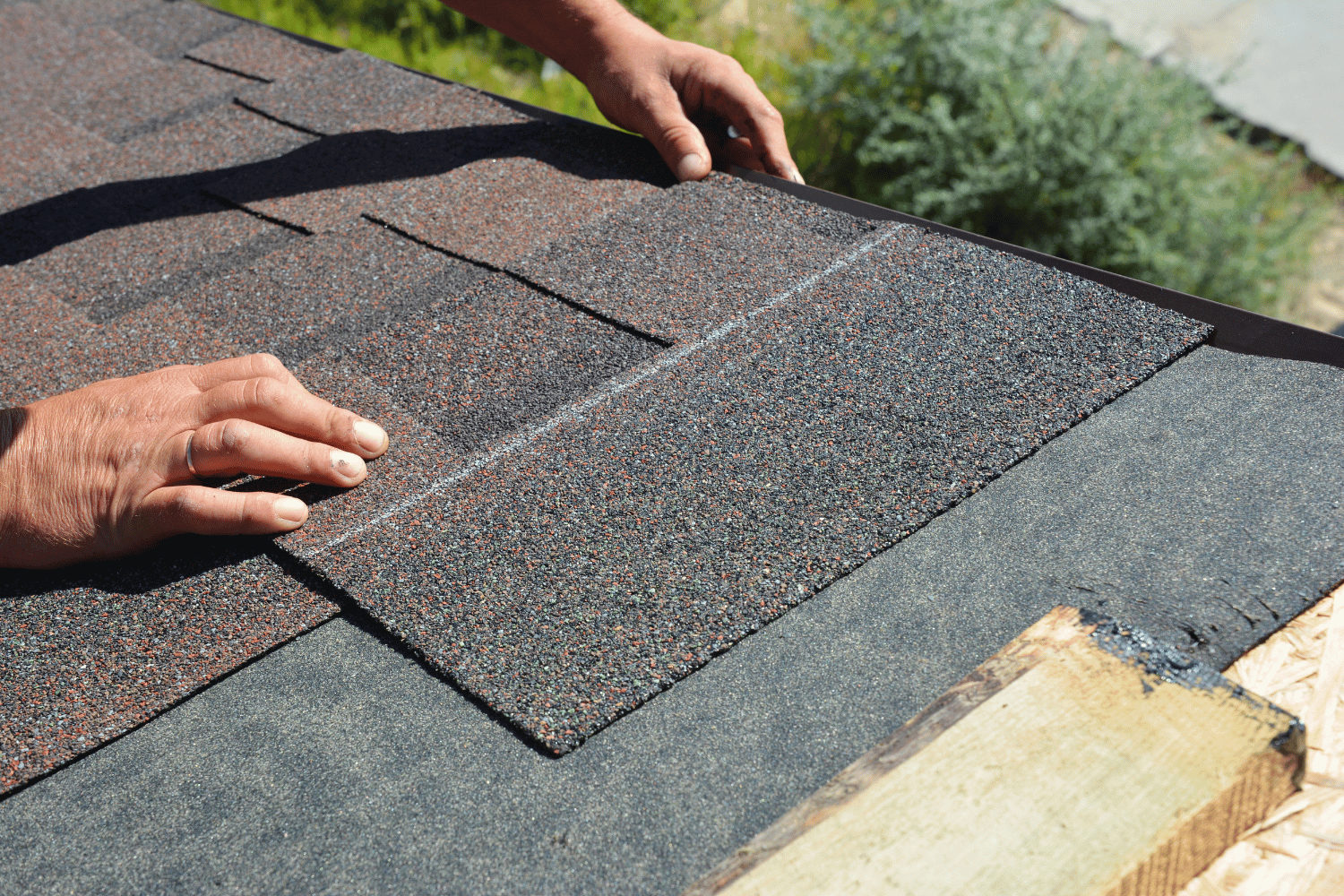
An illustration showing various types of roof decking materials.
Roof decking, or roof sheathing, is the foundational layer of your roof system, providing structural support. It holds all other roofing materials in place, ensuring overall stability. Plywood and oriented strand board (OSB) are common materials for roof decking, offering strength and durability. Choosing between them depends on cost, availability, and structural needs.
Roof decking includes plank decking and sheet decking. Plank decking uses individual boards, while sheet decking, or sheathing, offers a continuous surface. Exterior gypsum board is an economical alternative to plywood and OSB, providing cost-effective solutions without compromising quality. For areas requiring more support, concrete sheathing is often reinforced to withstand heavier loads.
Historically, plank decking made from 1×6” or 1×8” boards was a common construction method before the widespread adoption of sheet decking. Roof decking can be solid sheathing, offering a continuous surface, or open sheathing, which includes ventilation gaps for better airflow. Each type of decking material and configuration has its specific uses and benefits, making it a critical consideration in any roofing project.
Underlayment
Underlayment serves as the protective barrier between your roof decking and the outer roofing materials, playing a crucial role in preventing water infiltration and safeguarding the integrity of the roof deck. Underlayment acts as an extra layer of defense, minimizing moisture intrusion and preventing significant damage over time. Felt and synthetic underlayment are the two primary options, each offering distinct advantages depending on your roofing project’s requirements.
Felt underlayment, or tar paper, is made from an organic mat saturated with asphalt, enhancing water resistance. Synthetic underlayment, with lower moisture permeability, offers superior leak protection.
Self-adhered underlayment with a sticky backing offers better waterproofing. An ice and water shield, made from polymer-modified bitumen, is often required in high-risk areas to minimize leaks from wind-driven rain.
Felt Underlayment
Traditionally made from materials like wood cellulose or fiberglass, felt underlayment is coated with a protective layer to enhance durability and water resistance. Felt underlayment comes in two common weights, 15 lb and 30 lb. The 30 lb. option is thicker and stronger, making it suitable for areas needing more robust protection.
Despite being an older type of underlayment, felt remains widely used due to its affordability and effectiveness. It provides a reliable barrier against moisture, keeping the roof decking dry and intact.
Advancements in roofing materials have led to synthetic underlayment, which offers additional benefits over traditional felt.
Synthetic Underlayment
Synthetic underlayment is a modern evolution in roofing materials, offering greater durability, superior water resistance, and improved nail-holding capability compared to traditional felt. Constructed from high-strength polymers, it provides exceptional performance in protecting the roof deck from moisture and other environmental factors. This makes synthetic underlayment a more reliable choice for long-term roof protection.
Synthetic underlayment’s durability allows it to withstand various weather conditions, keeping your roof secure and leak-free over time.
Overall, synthetic underlayment outperforms felt in longevity and roof protection, making it a preferred option for modern roofing systems.
Drip Edge
A critical yet often overlooked component of a roofing system is the drip edge. A drip edge prevents water from getting underneath the roofing material and underlayment, protecting the roof deck and fascia board from rot and water damage. Building codes require drip edges, emphasizing their importance in ensuring a roof’s longevity.
Typically made from non-corrosive metals like galvanized steel, aluminum, and copper, or durable plastics, drip edges extend beyond the fascia to guide water away from the roof. There are various styles of drip edges, including C-style, L-style, and T-style, each suited to different roofing configurations and aesthetic preferences.
Proper installation of a drip edge prevents fascia board and roof decking edges from rotting due to prolonged water exposure.
Ice and Water Shield
Ice and water shield is a specialized material protecting vulnerable roof areas from water infiltration and ice damage. Typically installed in roof valleys, around penetrations, and on low-pitched roofs, this waterproof membrane prevents leaks and maintains the roof’s integrity. The self-sealing nature of the membrane helps to prevent leaks around roofing nails, providing an extra layer of security.
In regions above the snowline, building codes often require two rows of ice and water shield along the roof edges to combat ice dams and water intrusion. Made from polymer-modified bitumen, this material is particularly effective at minimizing the risk of leaks caused by wind-driven rain, making it an indispensable component in high-risk areas.
Roofing Material
Choosing the right roofing material is crucial, significantly impacting the roof’s performance, aesthetics, and longevity. Various roofing materials are available for residential roofing, including asphalt shingles, metal roofing, slate shingles, wood shingles, concrete tiles, synthetic roofing, and rolled roofing. Rolled roofing is a cost-effective and easy-to-install option for low-sloped residential roofs and utilitarian structures like sheds and garages. Each material offers unique benefits, from affordability and ease of installation to durability and style.
Asphalt shingles are the most common due to their cost-effectiveness and versatility. However, metal roofing, slate shingles, and synthetic options also provide excellent durability and aesthetic appeal.
Local climate, budget, and personal preference play crucial roles in determining the best roofing material. Understanding these options helps homeowners make informed decisions for a successful roofing project.
Asphalt Shingles
Asphalt composite shingles are the most common roofing material in America, favored for their affordability and ease of installation. Available in styles like 3-tab, dimensional, and luxury, asphalt shingles cater to different aesthetic preferences and performance needs. The 3-tab shingles, for instance, are designed to last over 20 years, while dimensional shingles offer enhanced textures and patterns, making them a cost-effective yet visually appealing option.
Manufacturers like GAF produce high-quality asphalt shingles, with options like impact-resistant shingles for added protection in hail-prone areas. Homeowners who choose GAF Master Elite® Contractors benefit from a lifetime warranty against material defects and up to 25 years of watertight coverage.
When the granules on asphalt roofing are gone, the entire roof replacement needs replacing, underscoring the importance of regular maintenance.
Metal Roofing
Metal roofing is known for its durability, moisture resistance, and superior UV protection, making it an excellent choice for various climates. Different forms of metal roofing include metal shakes, shingles, standing seam metal roofing, and stone-coated steel, each offering unique aesthetic and functional benefits. Standing seam metal roofs feature raised seams that interlock, effectively keeping moisture out and providing a sleek, modern look. Additionally, a metal roof can enhance the overall appeal of your home.
While the initial cost of metal roofing can be higher, its long lifespan—ranging from 30 to 75 years—makes it cost-effective in the long run. Additionally, metal roofs are recyclable, enhancing their eco-friendliness.
Installing standing seam metal roofs requires specialized skills, and not all roofing companies may have the expertise for such installations. Despite these considerations, metal roofing remains popular for homeowners seeking durability and sustainability.
Slate Shingles
Slate roofing is made from thin sheets of real stone, harvested from quarries and shaped into roofing material. Known for their exceptional longevity, slate roofs can last 75 to 150 years, making them one of the most durable roofing options. The expected lifespan of a slate roof is over 100 years, reducing the need for frequent replacements and enhancing eco-friendliness.
Despite their durability and aesthetic appeal, slate shingles have drawbacks. They are heavy, requiring a roof structure that can support their weight and specialized installation skills. Slate shingles can break easily when hit with force, and the high cost of the material and shipping can be prohibitive for some homeowners. For those willing to invest, slate shingles offer unmatched beauty and longevity.
Wood Shingles and Shakes
Wood shingles and shakes offer a natural and rustic aesthetic, commonly made from trees like pine, cypress, red cedar, and redwood. Wood shingles are thin, sawn slabs, while shakes are thicker, split wedges, each providing a distinct look and texture. Properly installed and maintained, wood shingles can last 25 to 40 years, though their lifespan may be shorter in damp conditions, averaging around 20 to 30 years.
Wood roofing materials require regular maintenance to prevent weathering and decay, but they are biodegradable, making them environmentally friendly. They are not suitable for areas prone to moisture or wildfires, limiting their application.
Despite these limitations, wood shingles and shakes remain popular for homeowners seeking a unique and natural look.
Concrete and Clay Tiles
Concrete and clay tiles are known for their durability and fire-resistant properties, making them ideal for hot climates. These materials withstand high temperatures without deteriorating, providing long-lasting protection. Concrete and clay tiles are heavier than other roofing options, which may require additional structural support.
One drawback of clay tiles is their higher cost compared to other roofing materials, which can be a significant consideration for budget-conscious homeowners. Despite higher upfront costs, the longevity and minimal maintenance of concrete and clay tiles can make them cost-effective over time.
Their aesthetic appeal and durability make them popular for those willing to invest in high-quality roofing material.
Synthetic Roofing
Synthetic roofing is designed to mimic the appearance of natural materials like slate or wood, offering a durable and cost-effective alternative.
Made from a combination of engineered polymers, recycled plastic, and rubber, synthetic roofing materials are not vulnerable to issues such as:
-
bug damage
-
rot
-
mold
-
algae
-
warping
-
buckling
This makes them a reliable choice for various climates.
Synthetic slate shingles, for example, are significantly lighter in weight compared to traditional natural slate, making installation easier and less demanding on the roof structure. Many synthetic cedar shake roofs can last over 50 years, showcasing their durability and long-term value.
For homeowners seeking the aesthetic appeal of natural materials without the associated drawbacks, synthetic roofing offers an excellent solution.
Ridge Capping
Ridge capping is essential for sealing the roof system at the top where two slopes meet, protecting against water intrusion and ensuring the roof’s integrity. Made from the same material as the main roofing material, ridge capping shingles provide a cohesive look and performance, enhancing the overall aesthetics of the roof. Proper installation of ridge capping requires a dry roof deck to ensure good adhesion, contributing to the roof’s durability and effectiveness.
Ridge capping not only seals high-stress areas like hips and ridges but also adds a finishing touch to the roof, ensuring a uniform appearance. This critical component helps prevent leaks and extends the life of the roof, making it an indispensable part of any successful roofing project.
Roof Vents
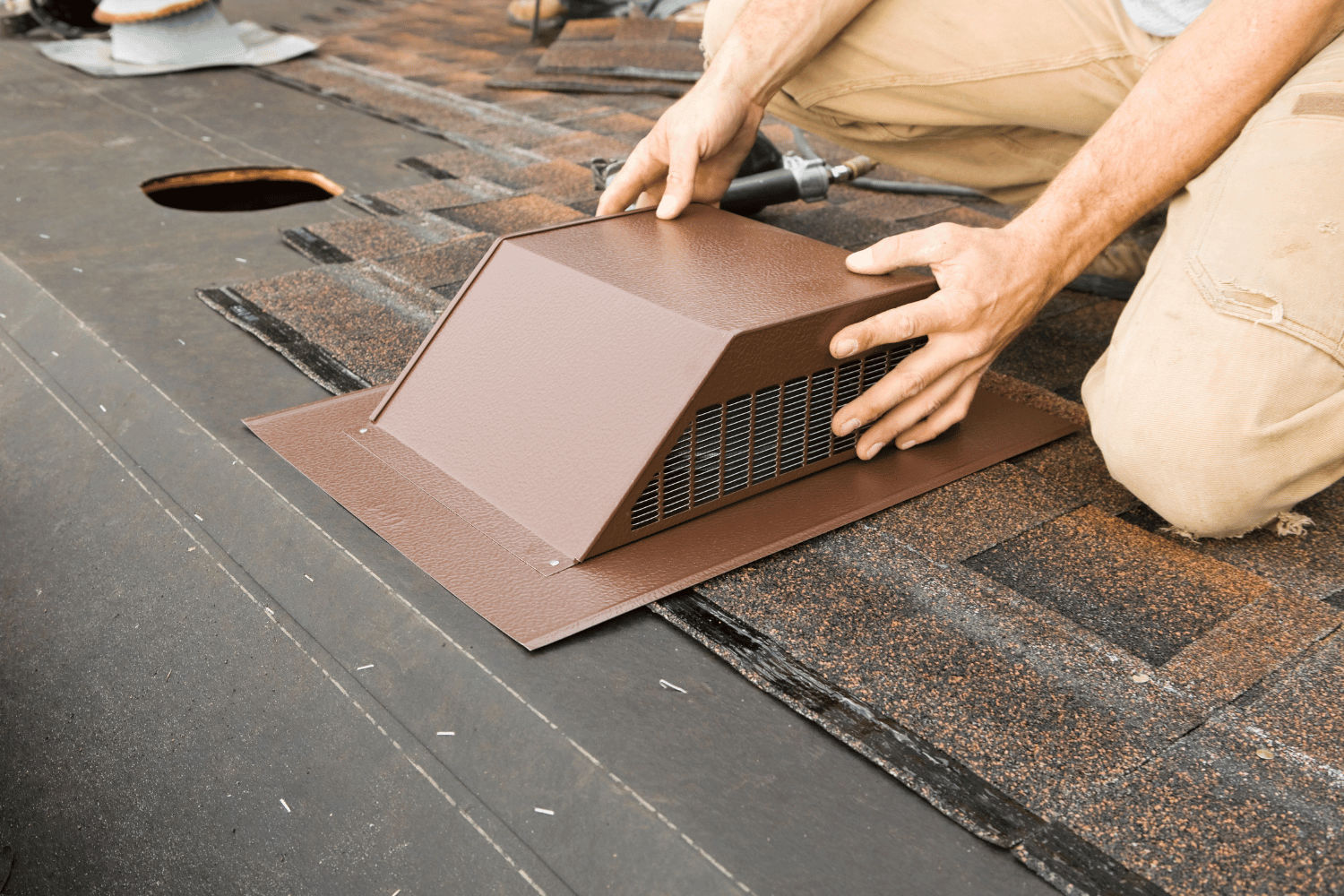
An illustration showing different types of roof vents including ridge vents and static vents.
Roof vents play a crucial role in maintaining a balanced attic environment by facilitating air circulation and allowing the attic and home to breathe. Proper attic ventilation extends the life of the roof and reduces energy bills by preventing heat and moisture buildup.
There are various types of ventilation systems, including active and passive ventilation systems, each offering unique benefits and considerations.
Static Vents
Static vents are designed to allow air to flow freely without mechanical assistance, facilitating natural ventilation through convection currents. Commonly placed near the roof’s ridge, static vents rely on natural airflow to expel hot air while preventing rain from entering, making them a cost-effective option for passive air exchange.
Ridge Vents
Ridge vents are continuous vents installed at the roof peak, providing a consistent outlet for hot air and promoting balanced attic ventilation. Strategically placed at the roof’s peak, ridge vents facilitate efficient expulsion of hot air, helping to maintain a cooler attic environment and prevent moisture buildup.
Powered Vents
Powered vents utilize electricity or solar energy to forcefully remove hot air from the attic, enhancing ventilation efficiency and potentially lowering attic temperatures significantly during summer months. By actively drawing out hot air, powered vents can help reduce energy costs and improve overall energy efficiency.
Roof Flashing
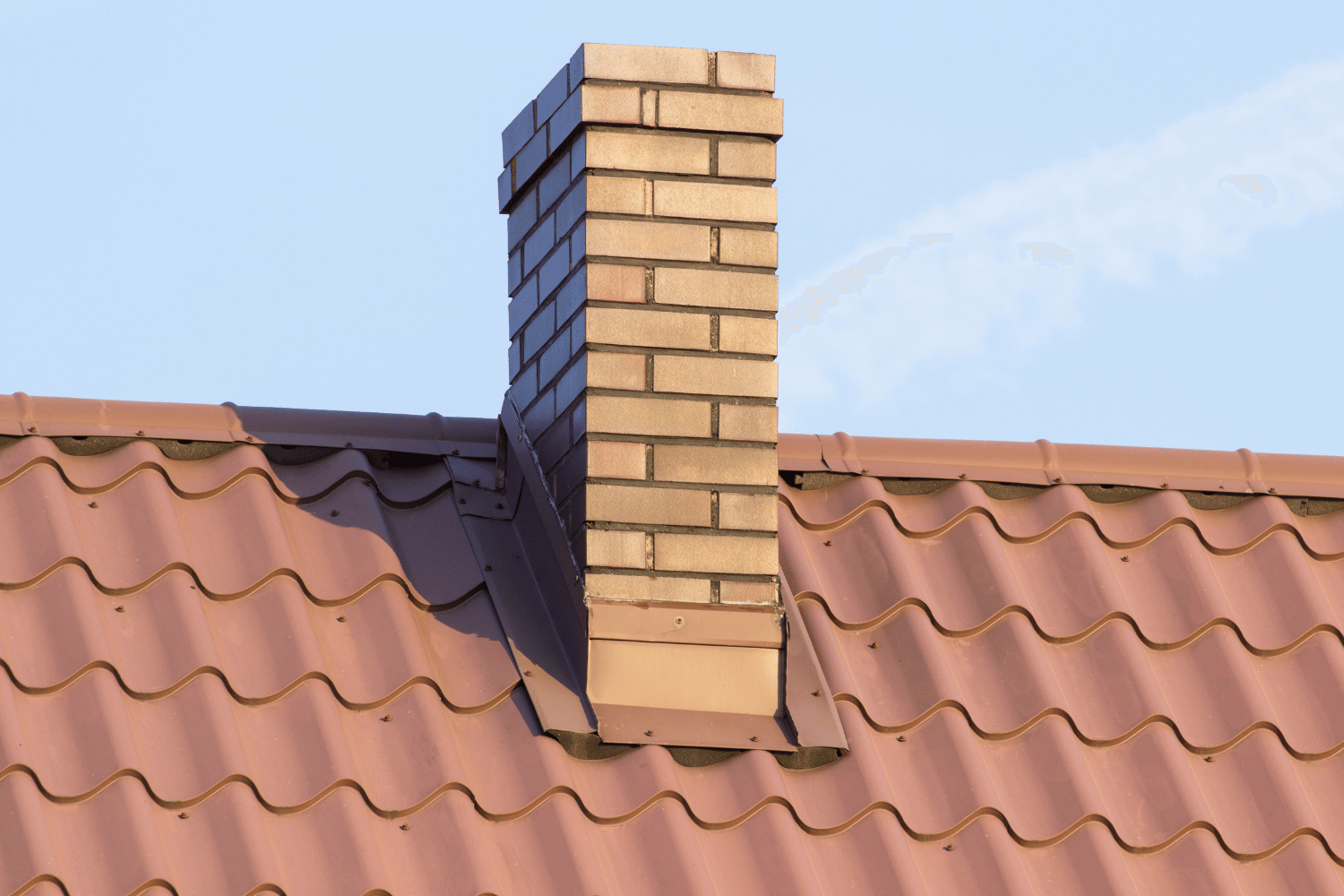
An illustration of roof flashing components and their placements.
Roof flashing is a critical component used to direct water away from roof areas like walls and chimneys, preventing leaks and ensuring the roof’s integrity. Common materials for roof flashing include aluminum, steel, and copper, each offering unique benefits in terms of durability and corrosion resistance. Using roofing cement to secure flashing provides flexibility, accommodating the roof’s natural expansion and contraction and preventing water from seeping into vulnerable areas.
Neglecting proper flashing installation can lead to roof leaks, causing significant water damage and costly repairs.
Different types of flashing are used for specific applications, such as:
-
Step flashing for roof-to-side-wall installations
-
Base flashing for sealing areas where vertical elements like chimneys intersect with the roof
-
Vent pipe flashing, which is essential for sealing around ventilation pipes to prevent leaks
-
Continuous flashing, employed where roofs meet walls
Proper installation and maintenance of roof flashing are crucial for preventing water damage and ensuring a long-lasting roof.
Pipe Boots
Pipe boots are essential for preventing water leaks into the attic and home, sealing the areas where pipes penetrate the roof. The most common material used for pipe boots today is synthetic rubber (neoprene), known for its durability and flexibility. Alternatives include plastic, lead, and copper, each offering unique benefits depending on the specific requirements of the roofing project.
Neoprene pipe boots should be replaced every ten years or so to maintain their effectiveness. While copper pipe boots are generally more expensive, they offer superior durability and longevity. Proper installation and regular maintenance of pipe boots are crucial for preventing leaks and protecting the roof system.
Roofing Nails
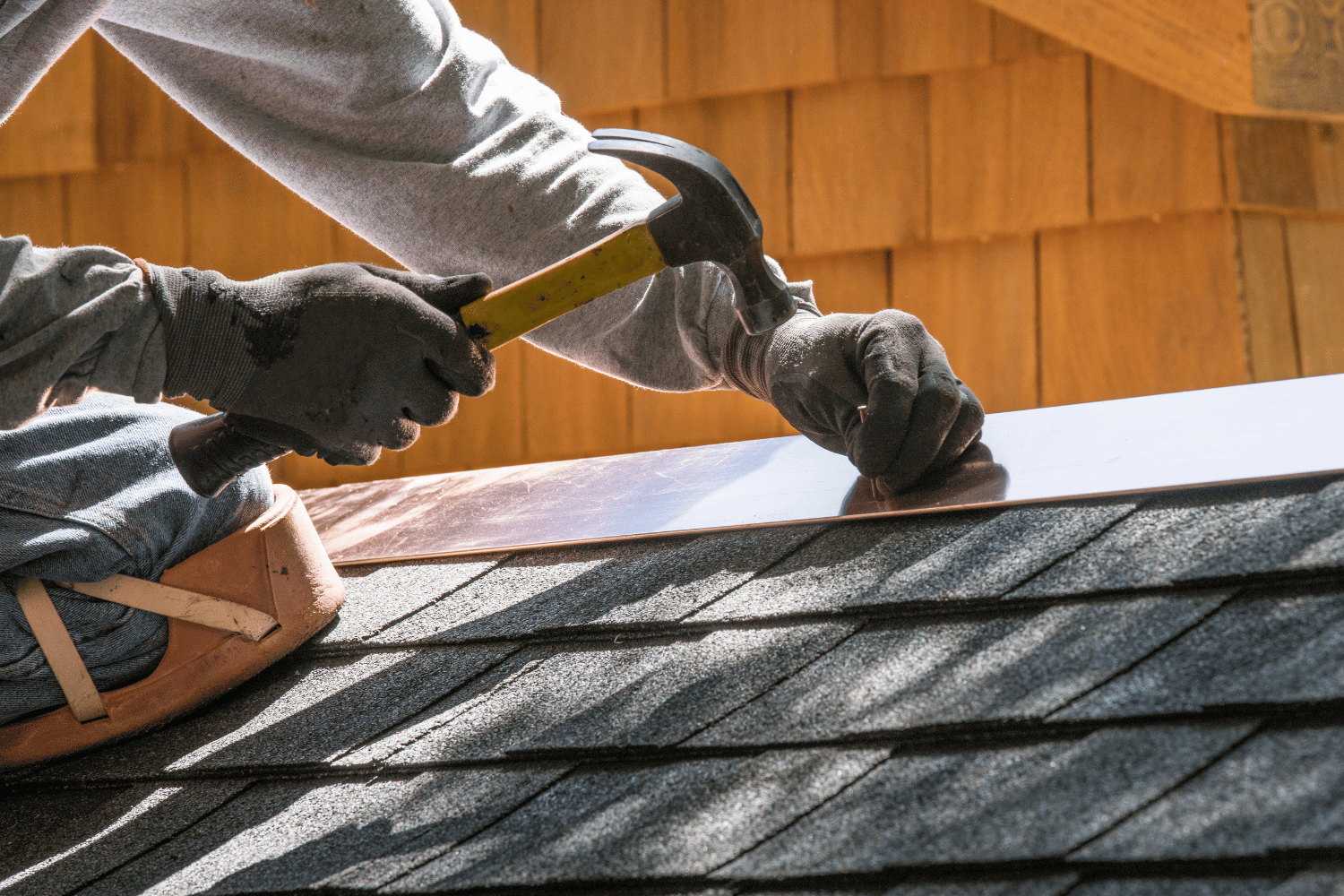
An illustration depicting various roofing nails used in roofing projects.
Roofing nails are a fundamental component in securing roofing materials, with three main types: smooth shank, ring shank, and square cap. Ring shank nails provide superior grip, being up to 300% stronger than smooth shank nails, making them ideal for areas prone to high winds. Roofing nails come in various materials, including steel, copper, and aluminum, with steel nails often being galvanized for corrosion resistance.
The length of roofing nails generally ranges from one inch to two inches, depending on the thickness of the decking and shingles. Building codes recommend a minimum thickness of 12-gauge for roofing nails to ensure adequate strength and durability.
Using screws as fasteners for roofing shingles is not advisable due to the risk of leaks from the gaps they create. Additionally, roofing nails should not be reused because their coatings may be damaged, potentially leading to performance issues in a new roof.
Summary
Understanding the top items on your roofing materials list is crucial for ensuring a successful roofing project. From the foundational roof decking to the protective underlayment, drip edge, and various roofing materials, each component plays a vital role in maintaining the integrity and longevity of your roof. By selecting the right materials and ensuring proper installation, homeowners can protect their investment and enjoy a durable, aesthetically pleasing roof for years to come.
Frequently Asked Questions
What is the purpose of roof decking?
The purpose of roof decking is to provide structural support for the roof system, ensuring that all other roofing materials are held securely in place. This foundational element is essential for the overall integrity of the roof.
What are the advantages of synthetic underlayment over felt underlayment?
Synthetic underlayment is superior to felt underlayment due to its enhanced durability, better water resistance, and improved nail-holding capability. This makes it a more reliable choice for roofing projects.
How does drip edge protect my roof?
Drip edge effectively prevents water from infiltrating beneath the roofing materials, safeguarding the roof deck and fascia board from potential rot and water damage. This crucial component helps ensure the longevity of your roof.
What are the benefits of using metal roofing?
Metal roofing provides durability, moisture resistance, and excellent UV protection, making it a long-lasting and eco-friendly choice. Additionally, its recyclability and potential cost-effectiveness contribute to its overall value.
Why is ridge capping important in a roofing system?
Ridge capping is crucial as it seals the junction of two roof slopes, preventing water intrusion and maintaining the overall integrity of the roofing system. Proper installation of ridge capping can significantly enhance the roof’s durability.
